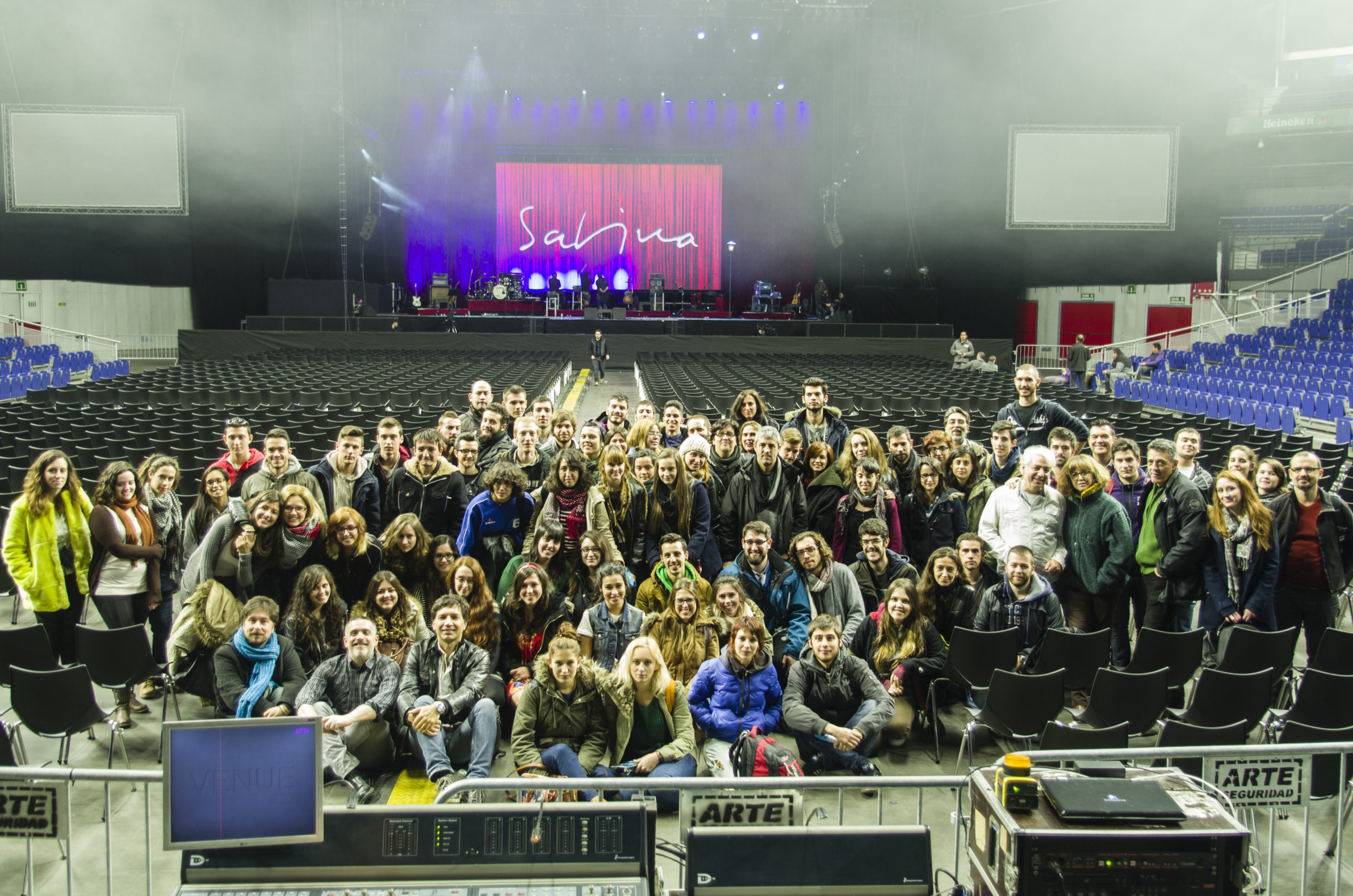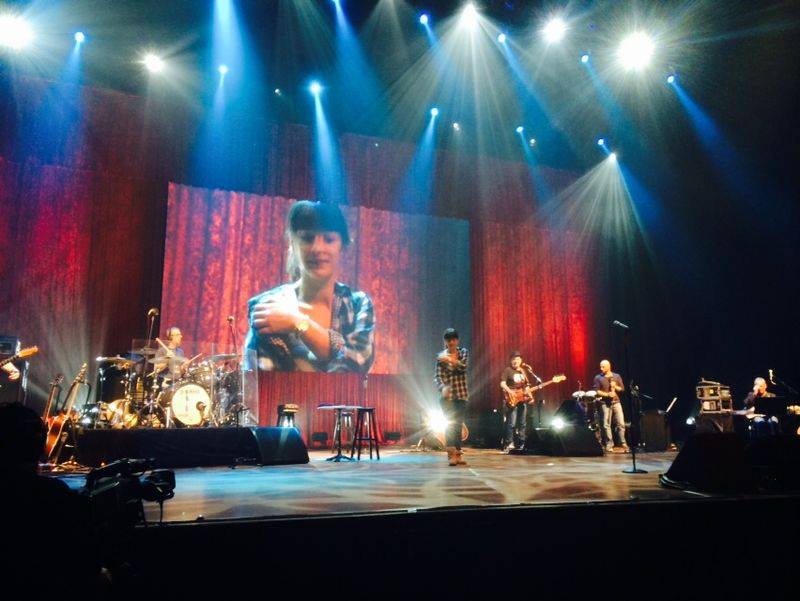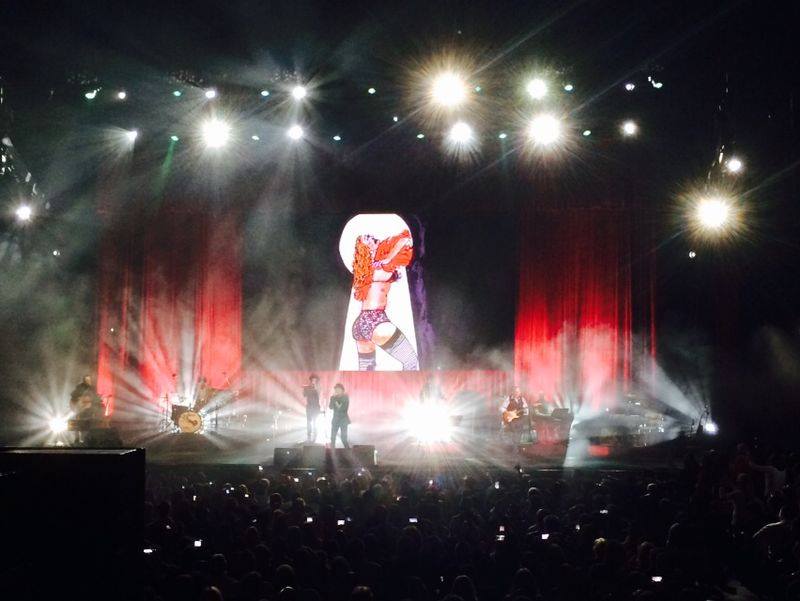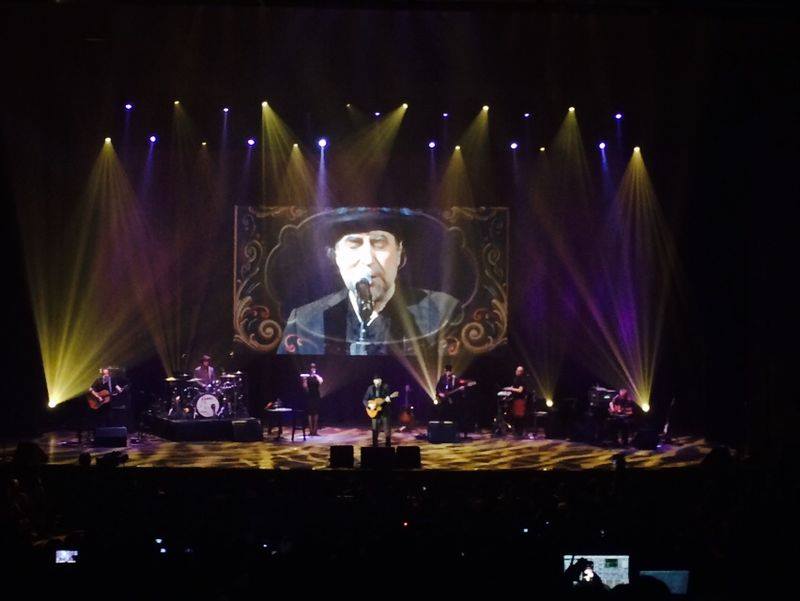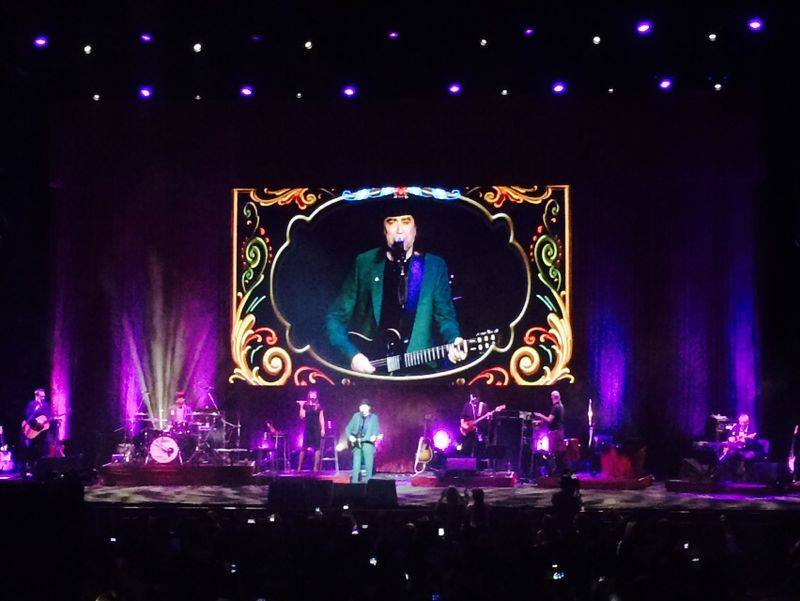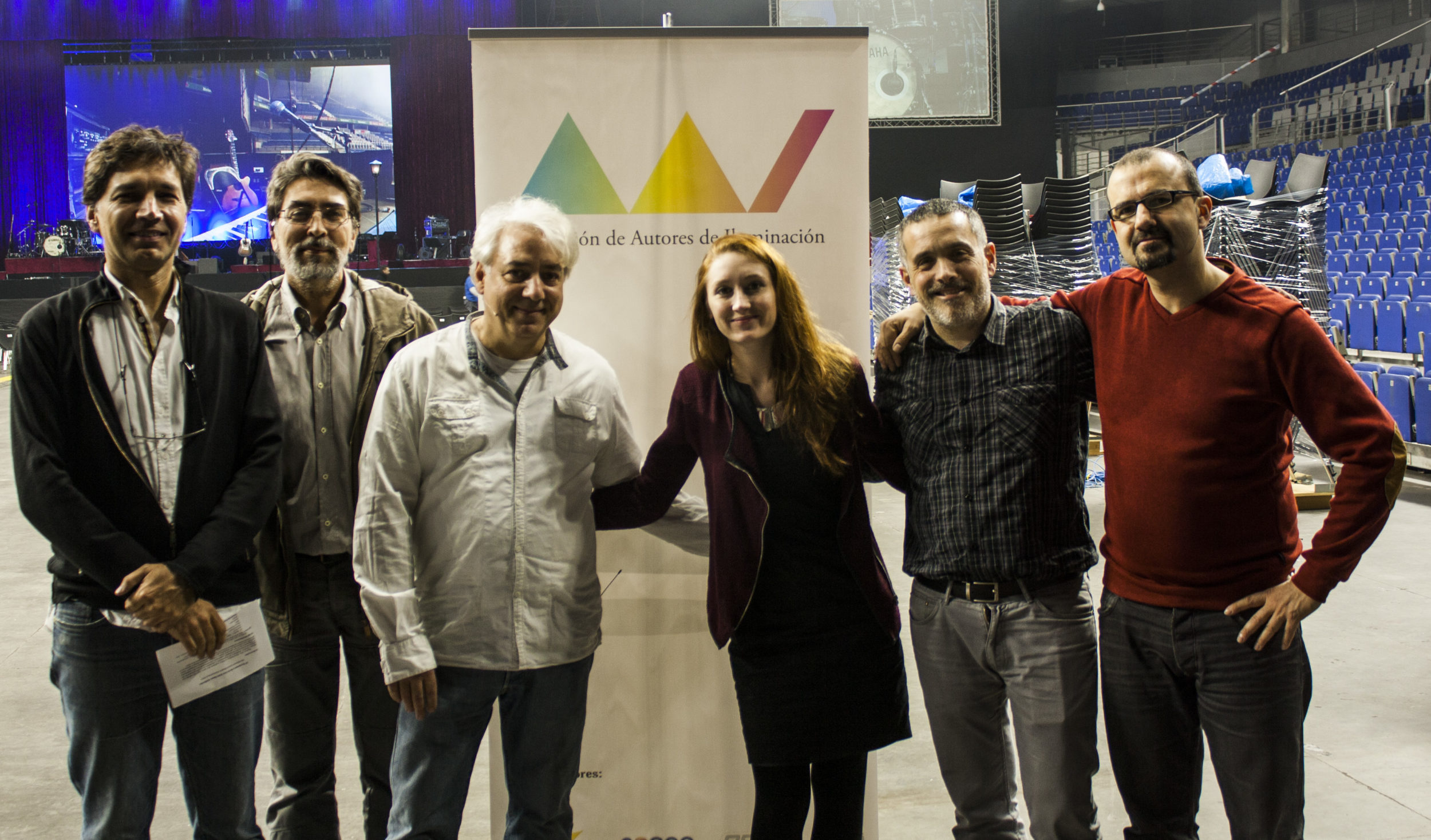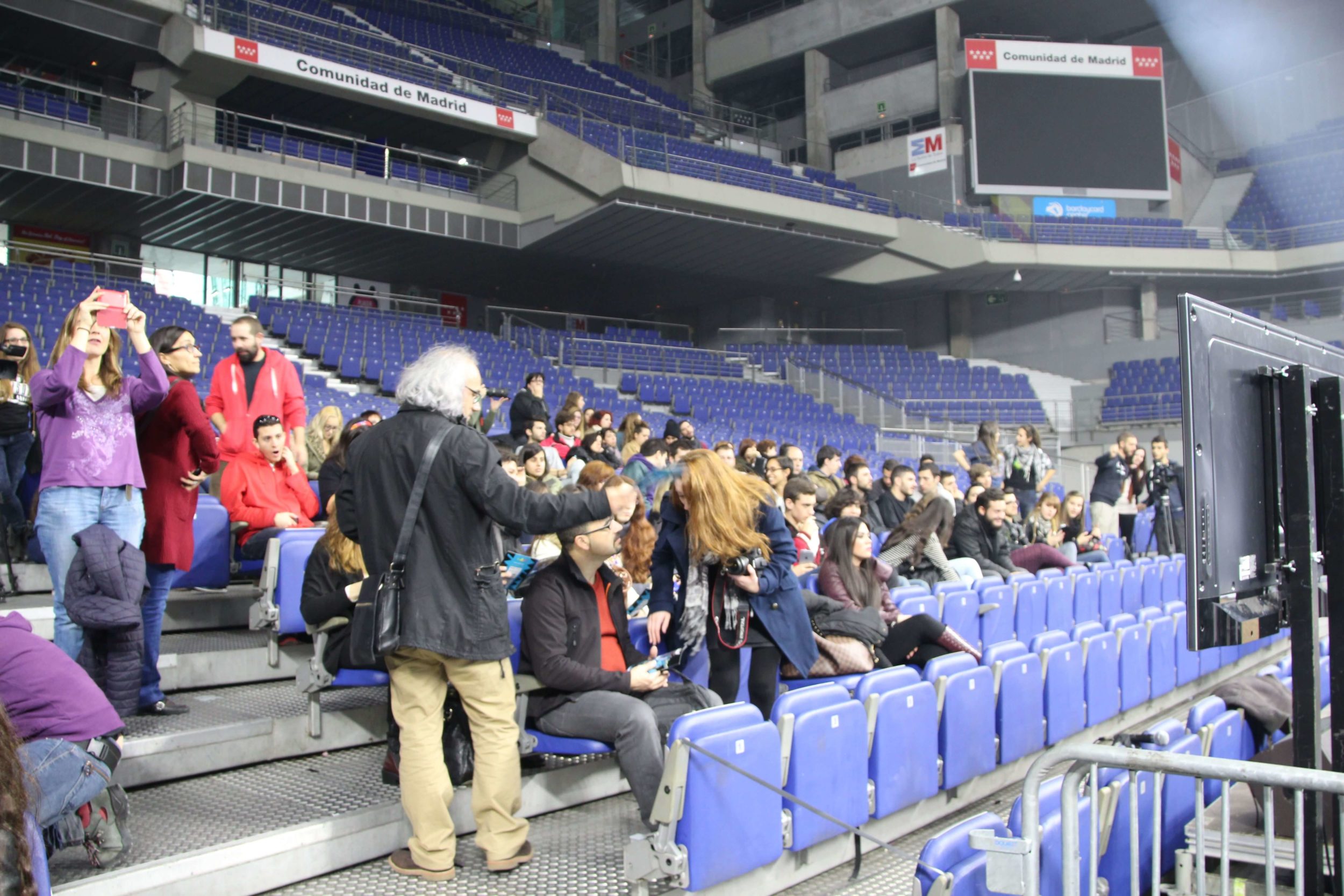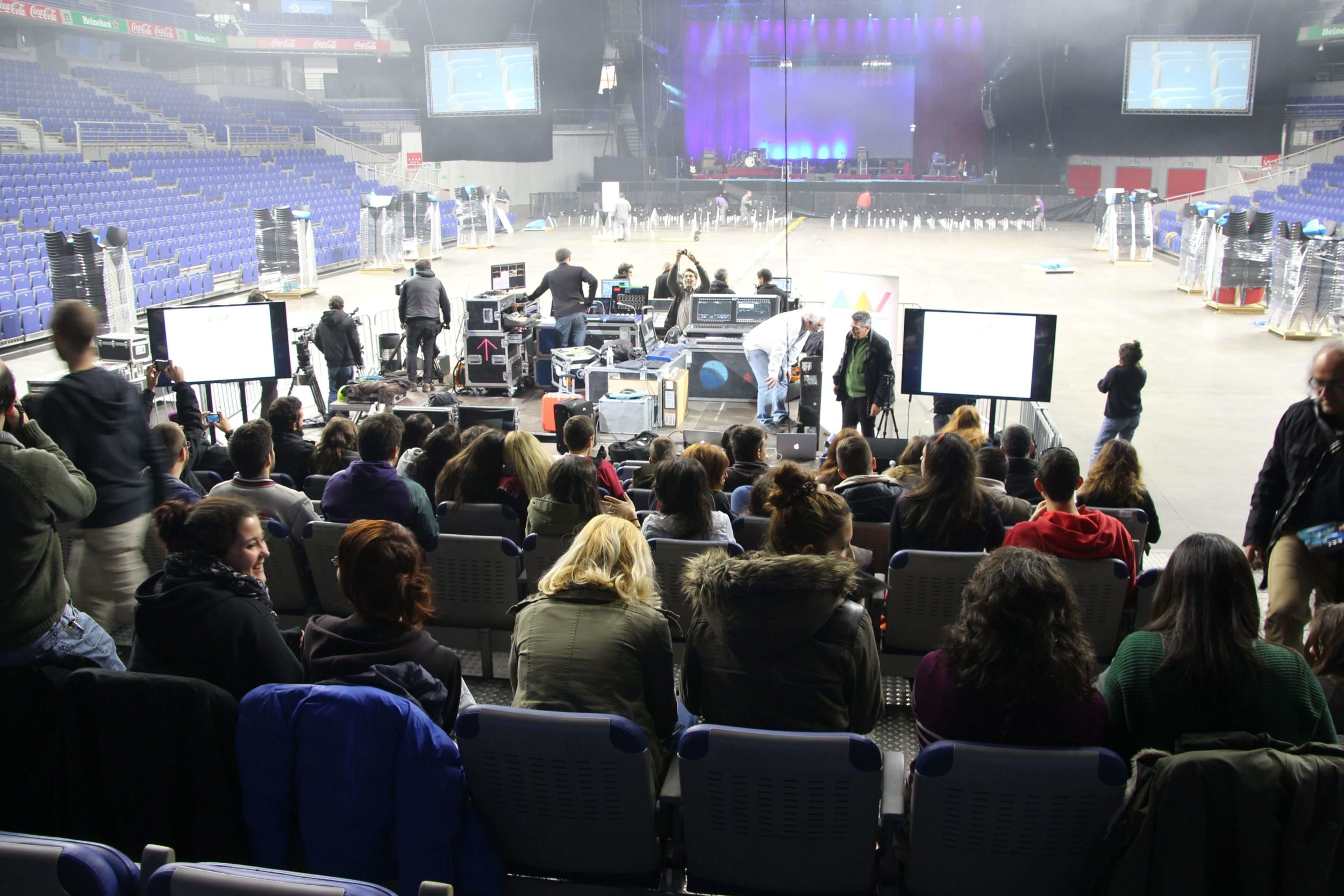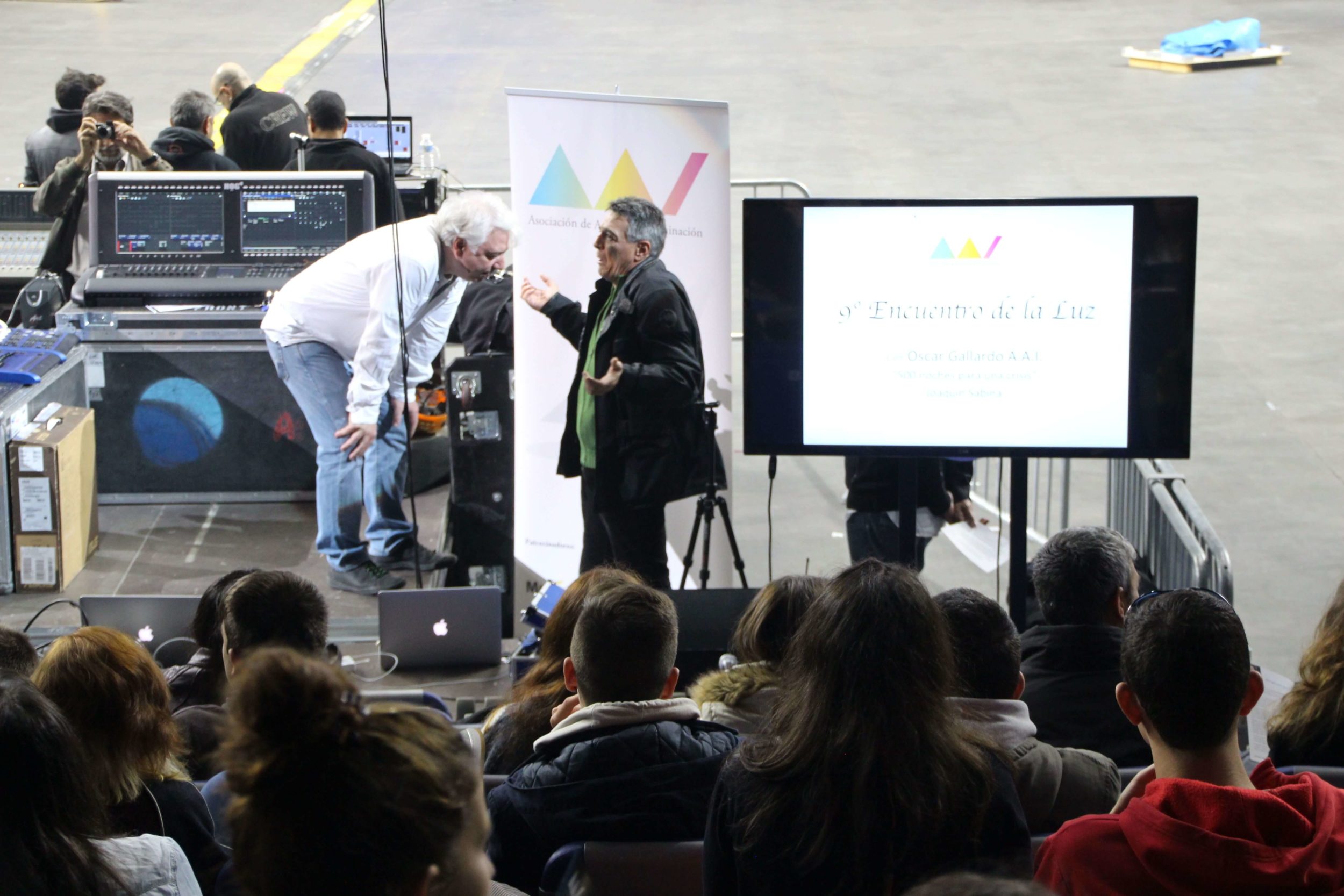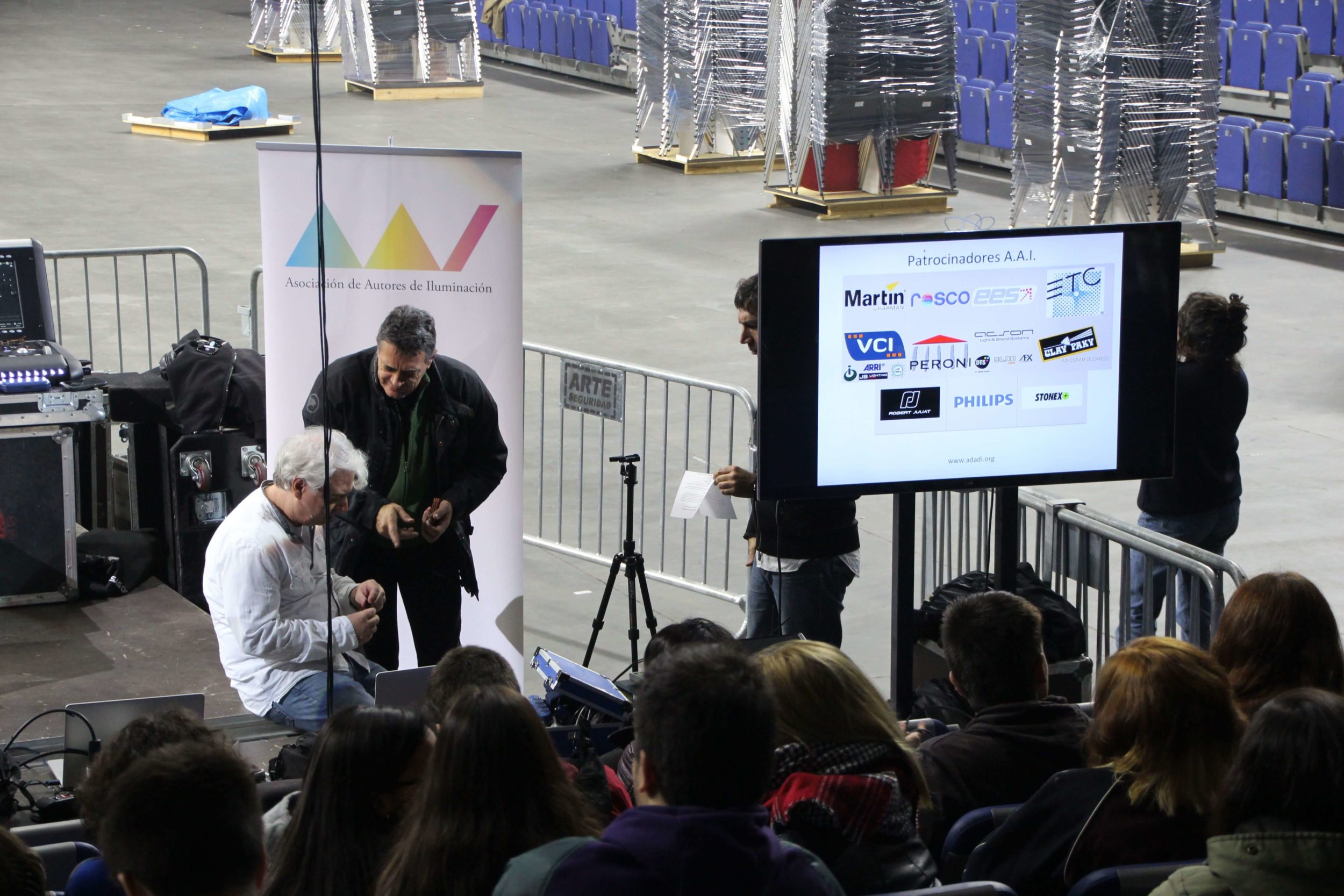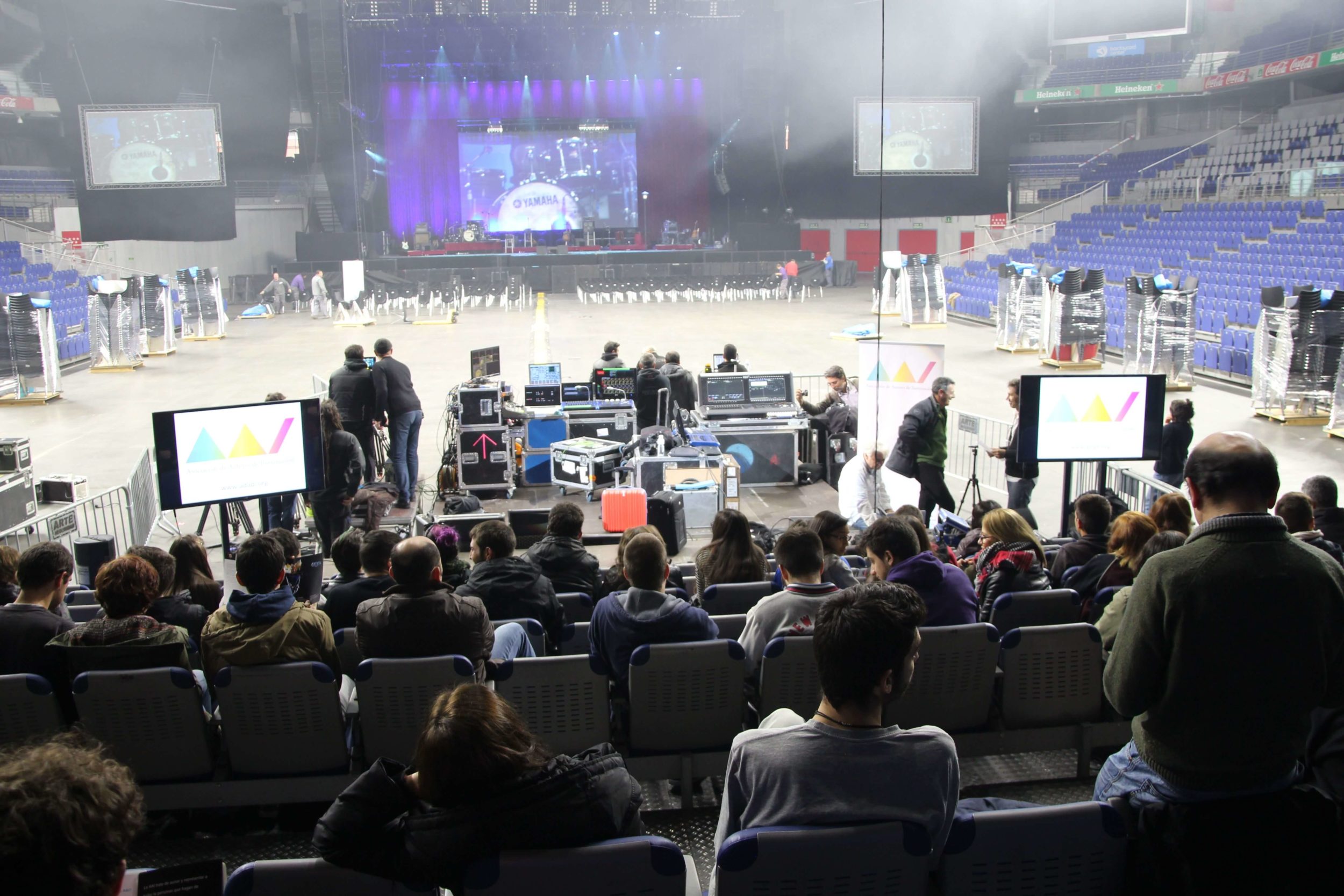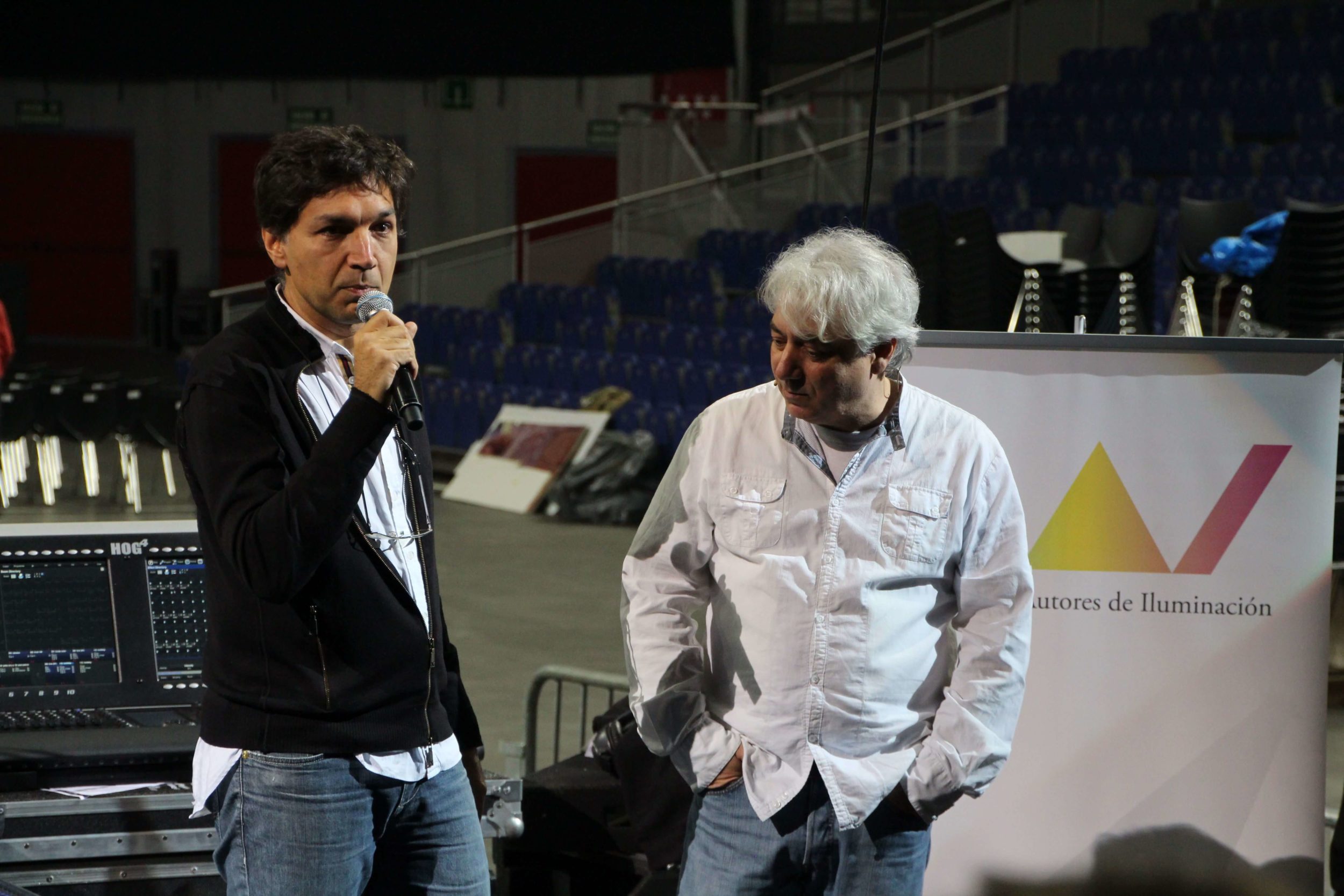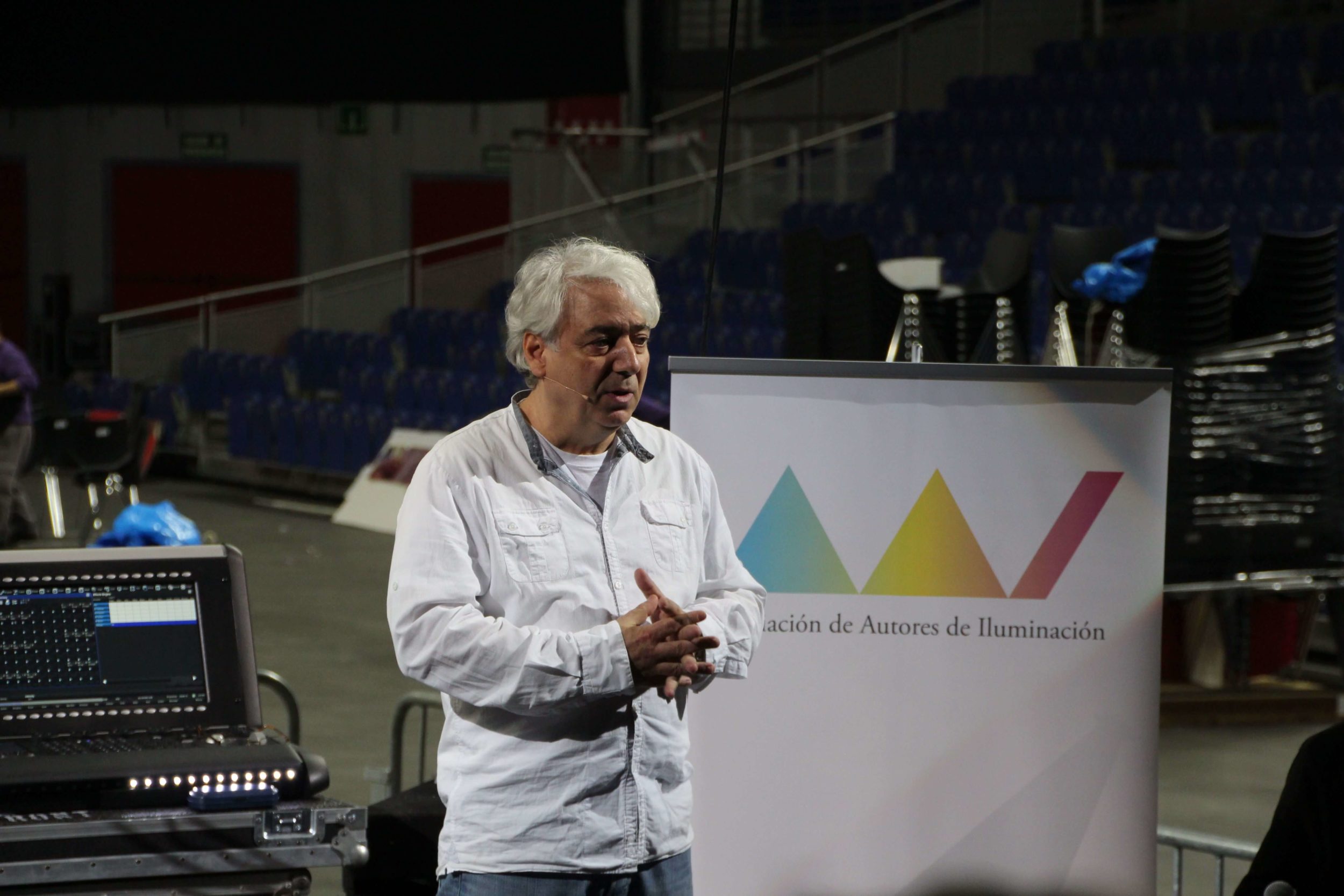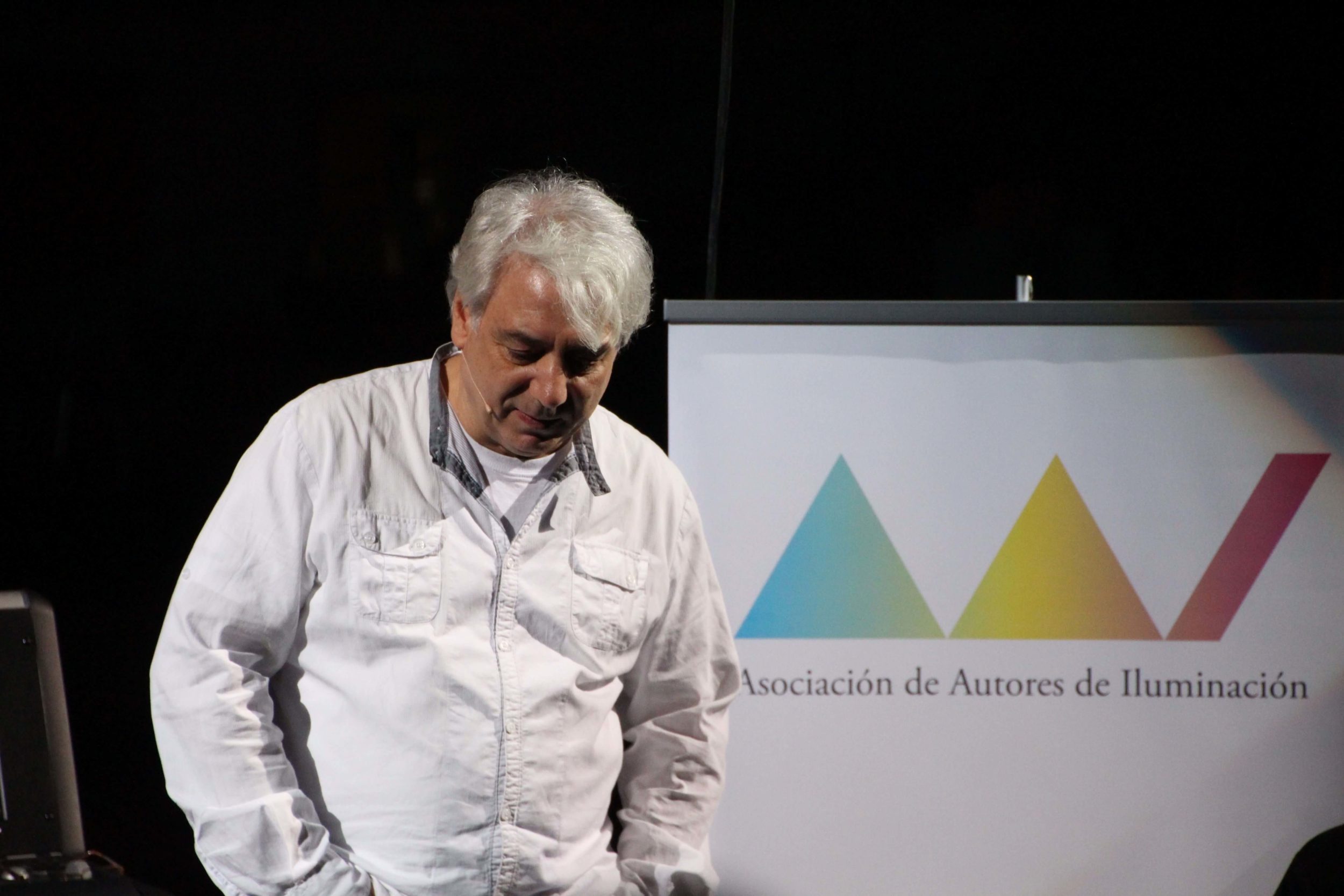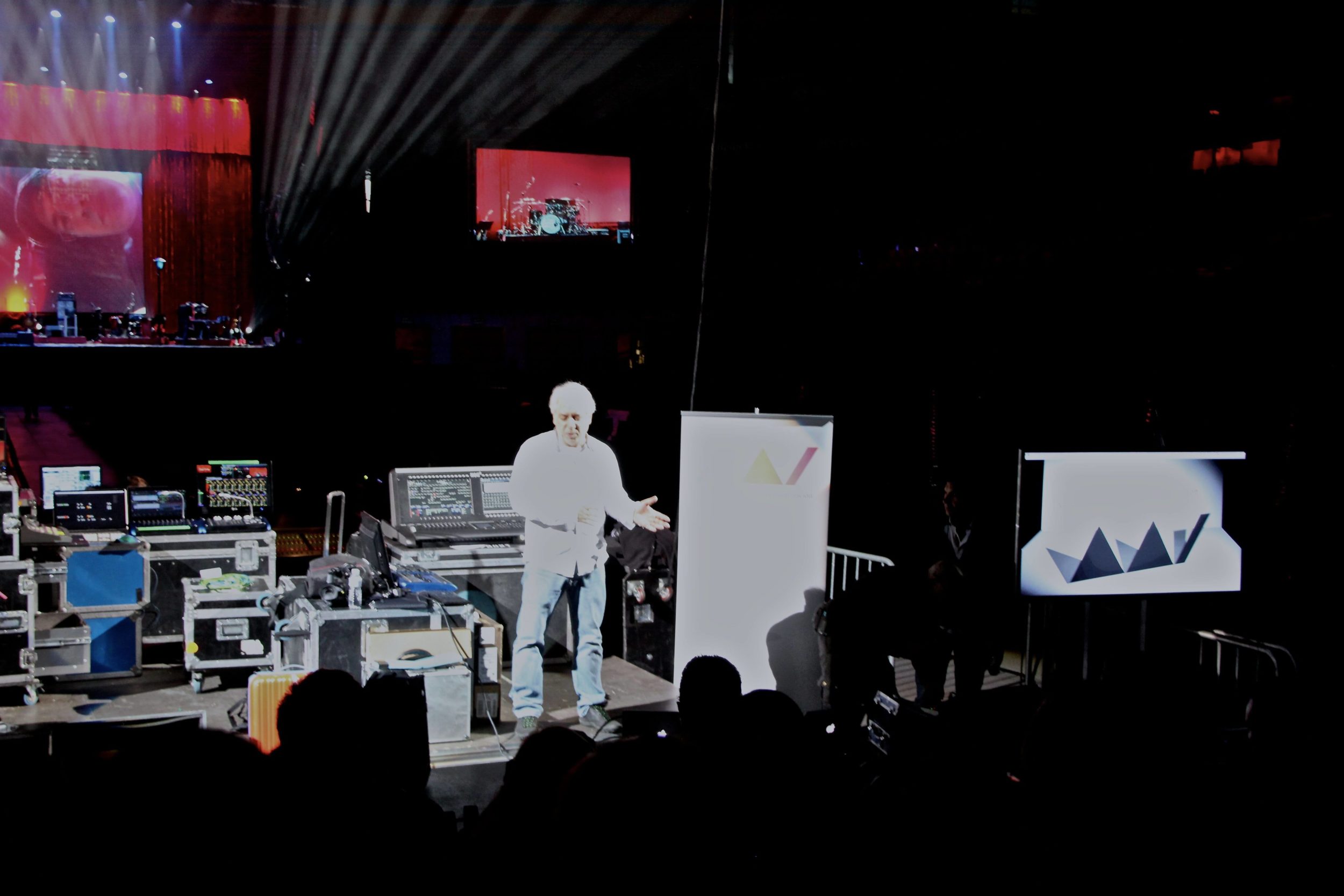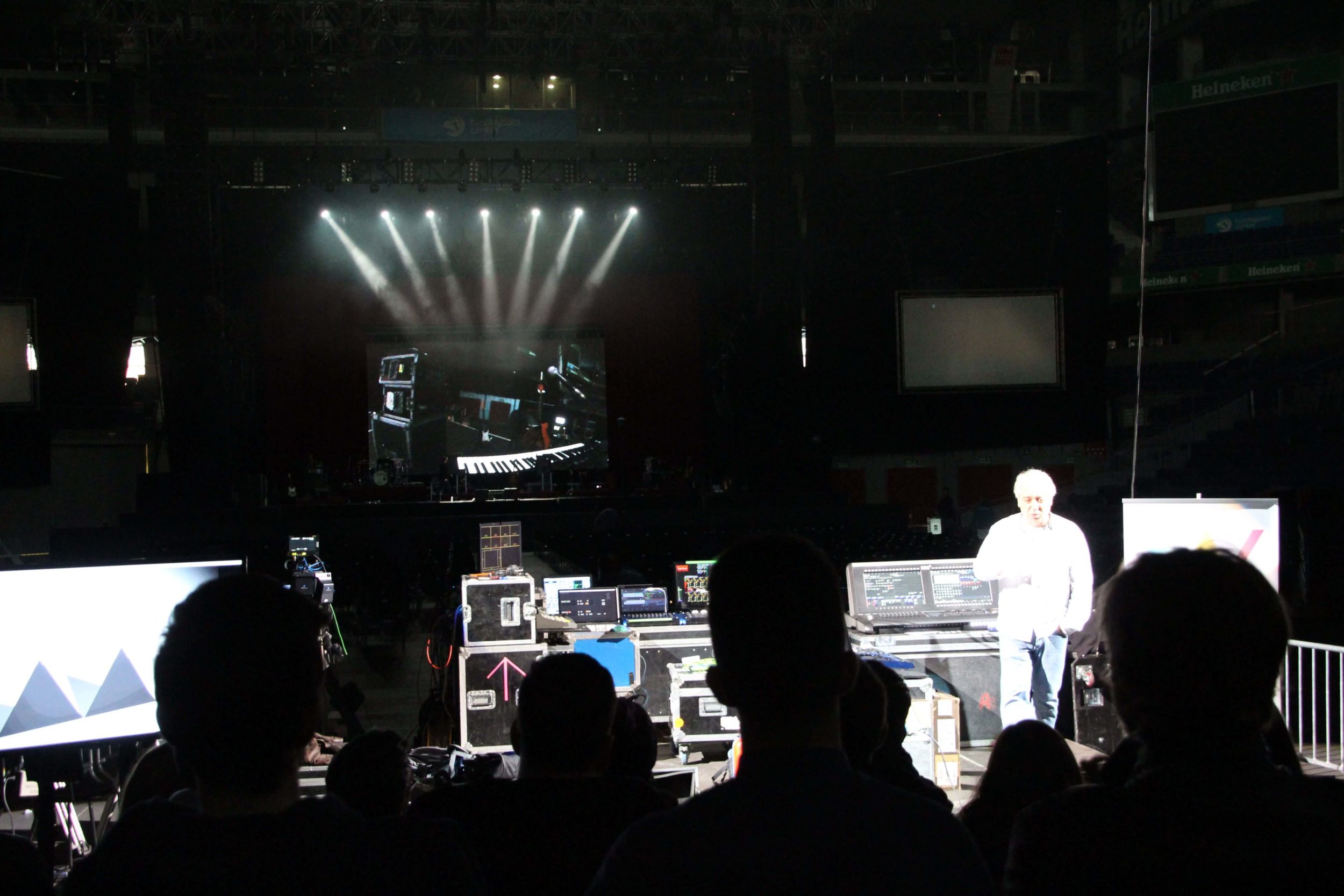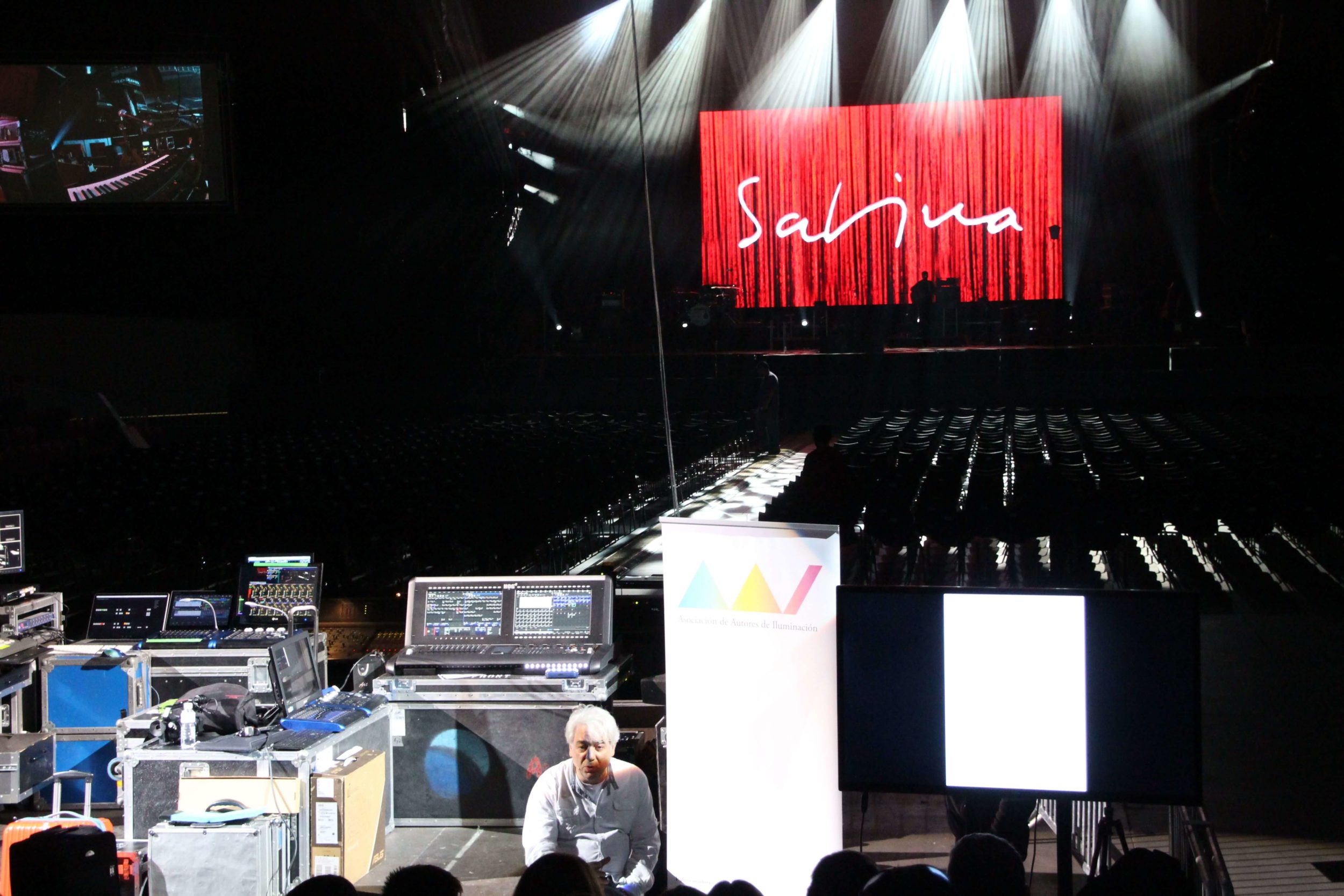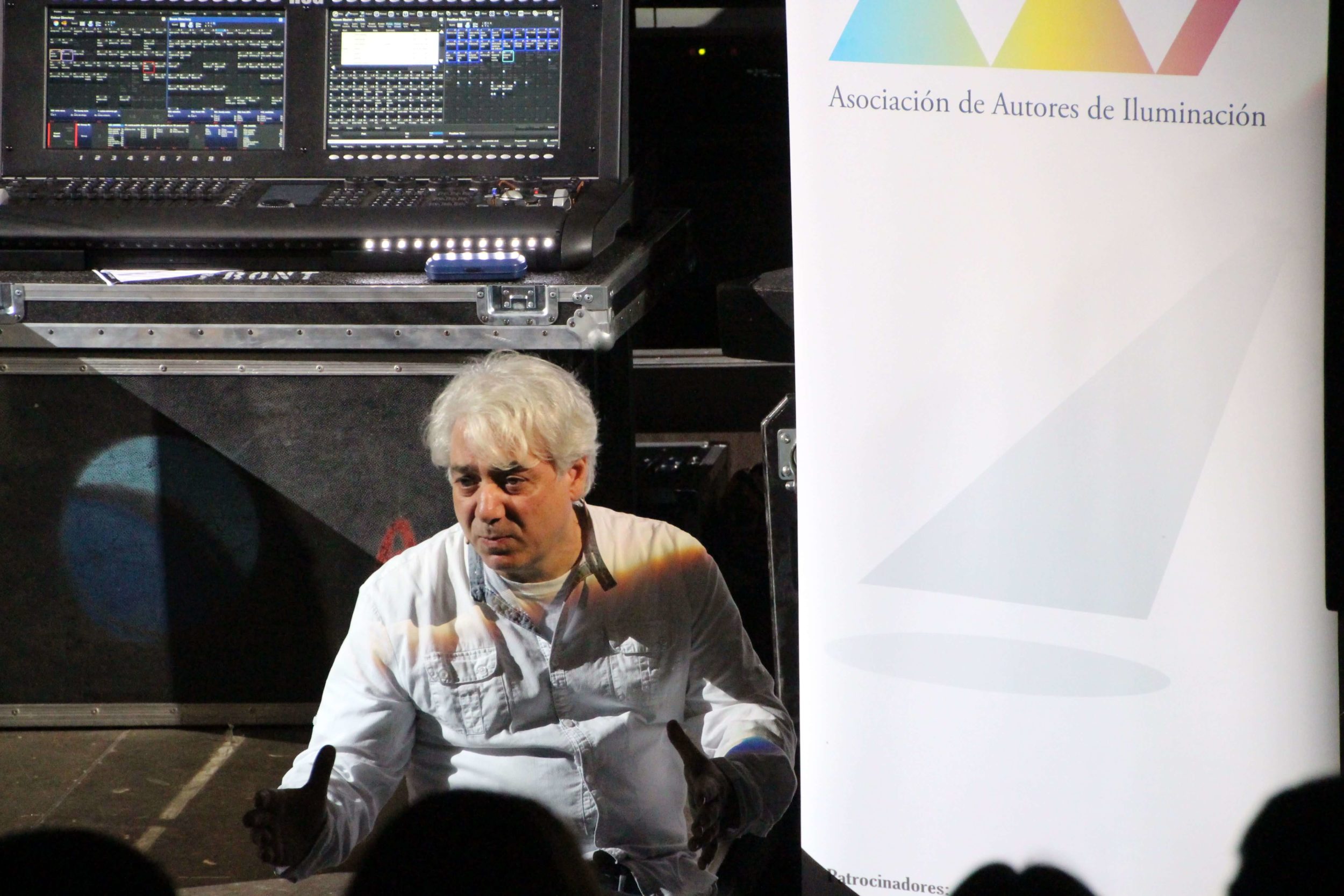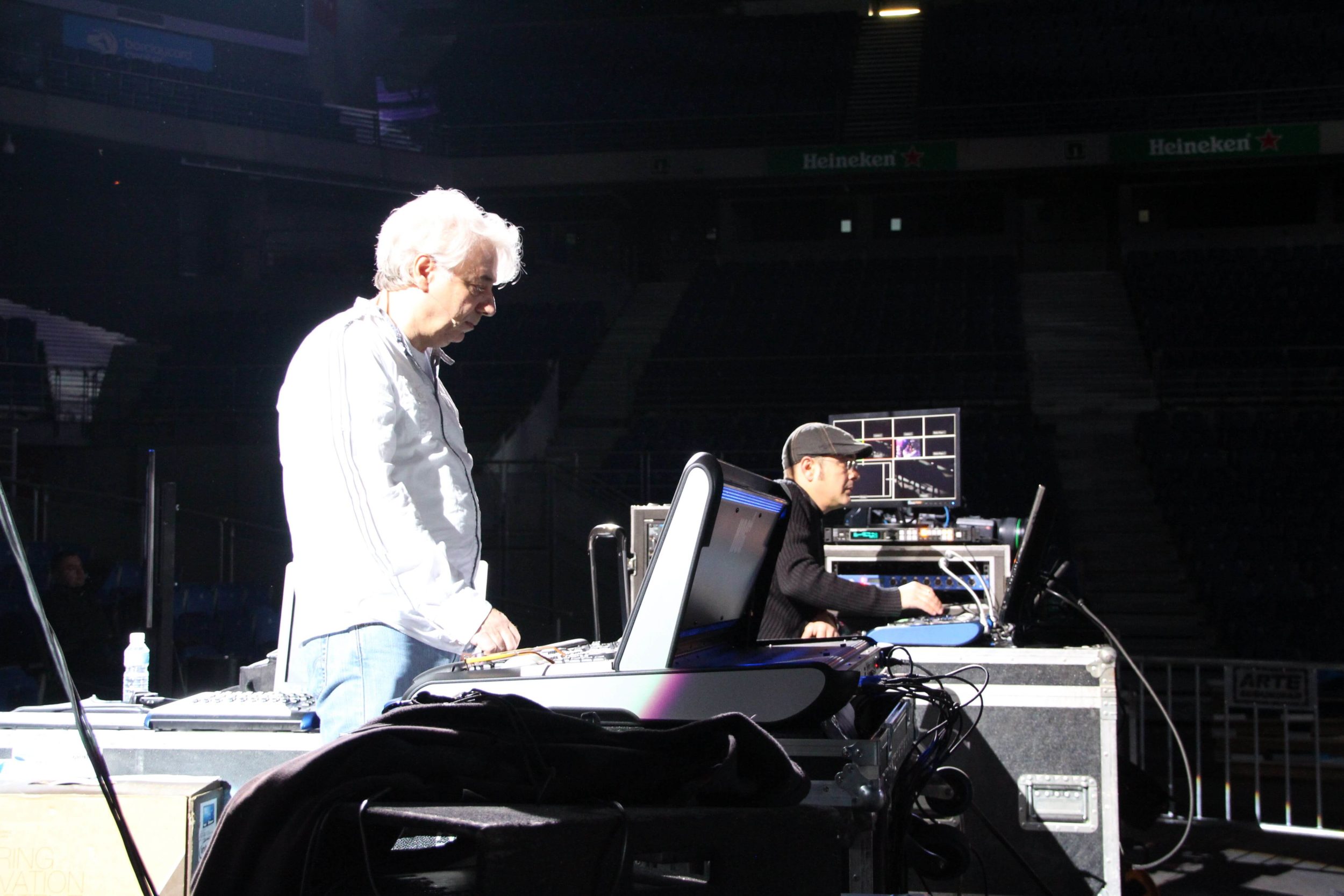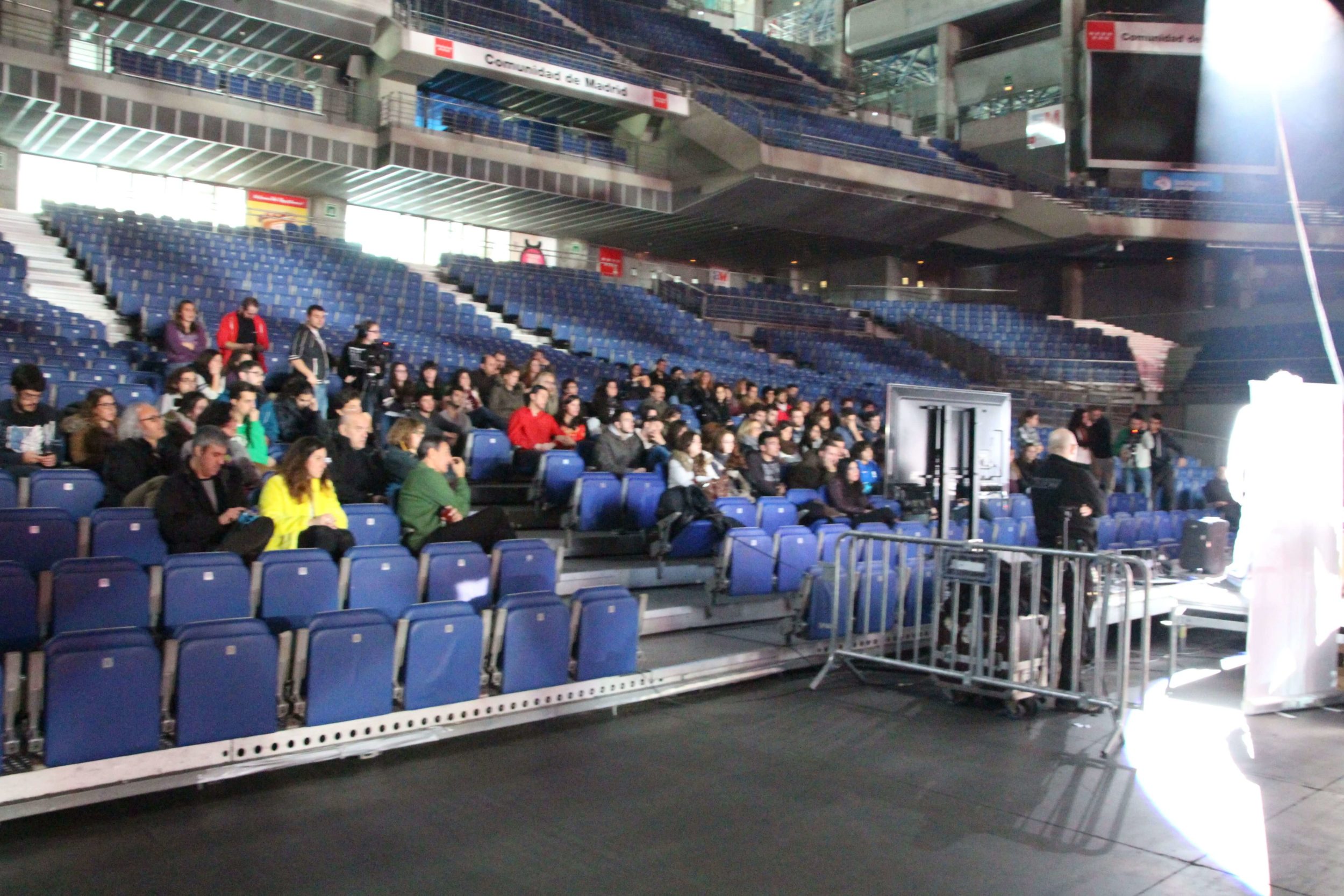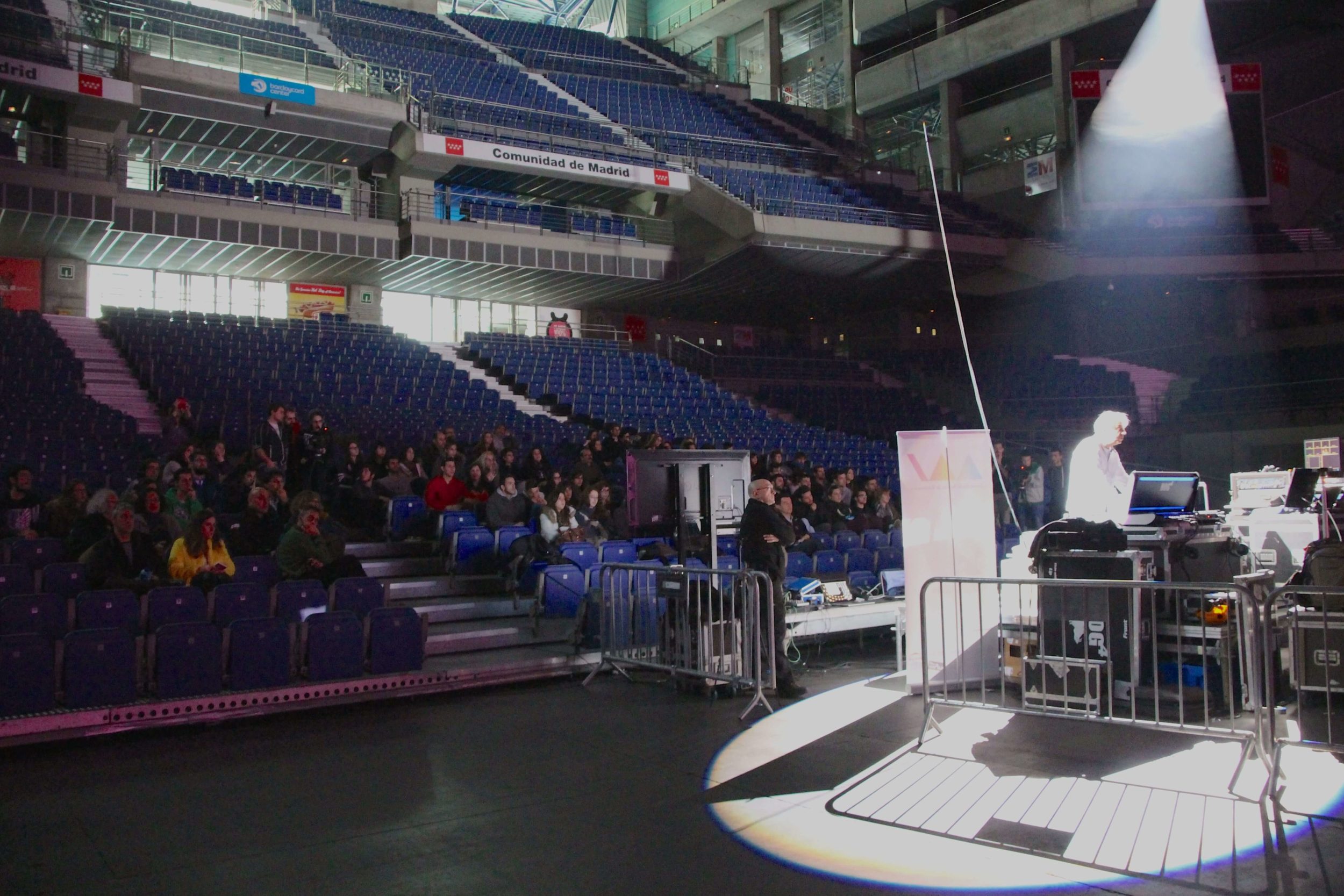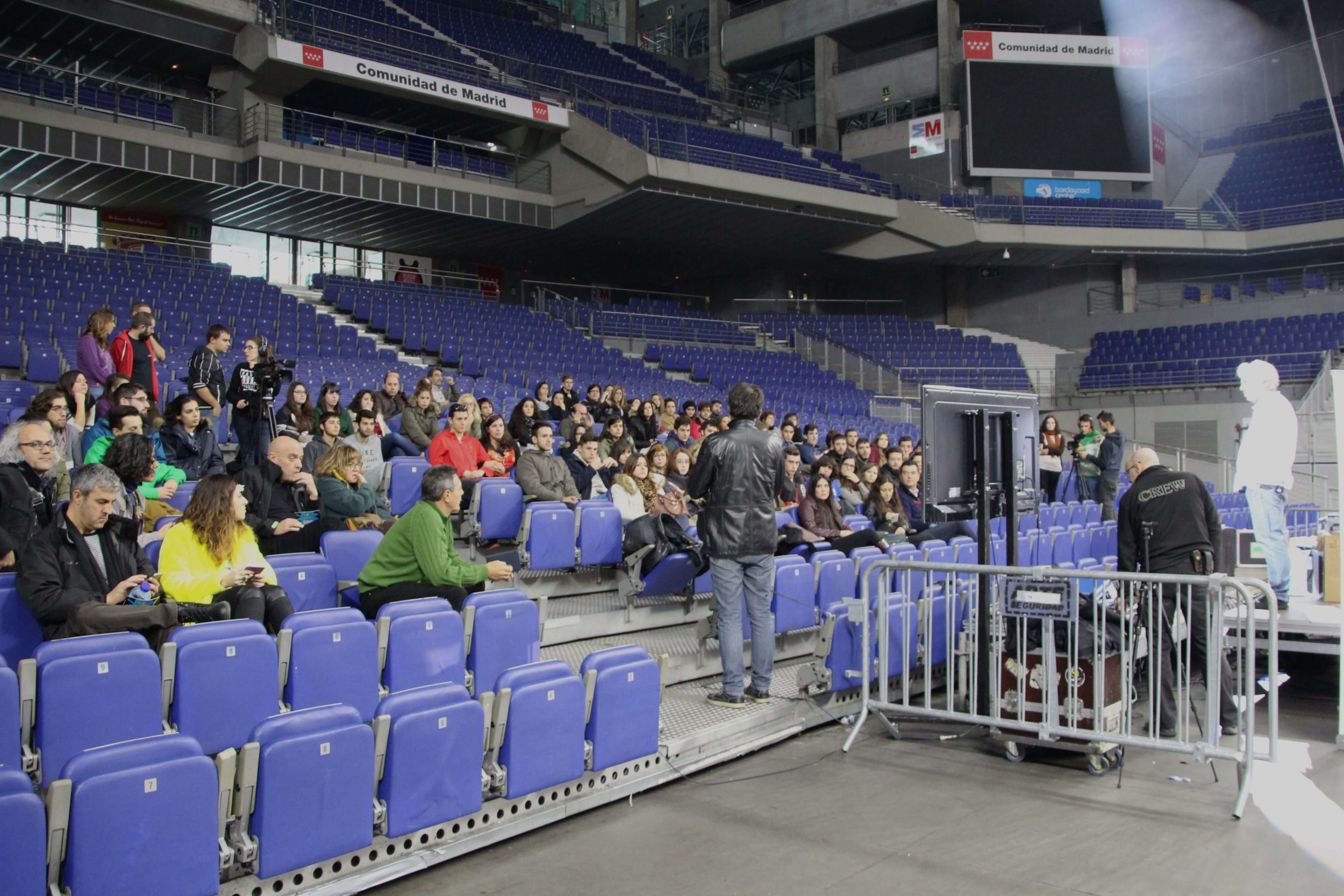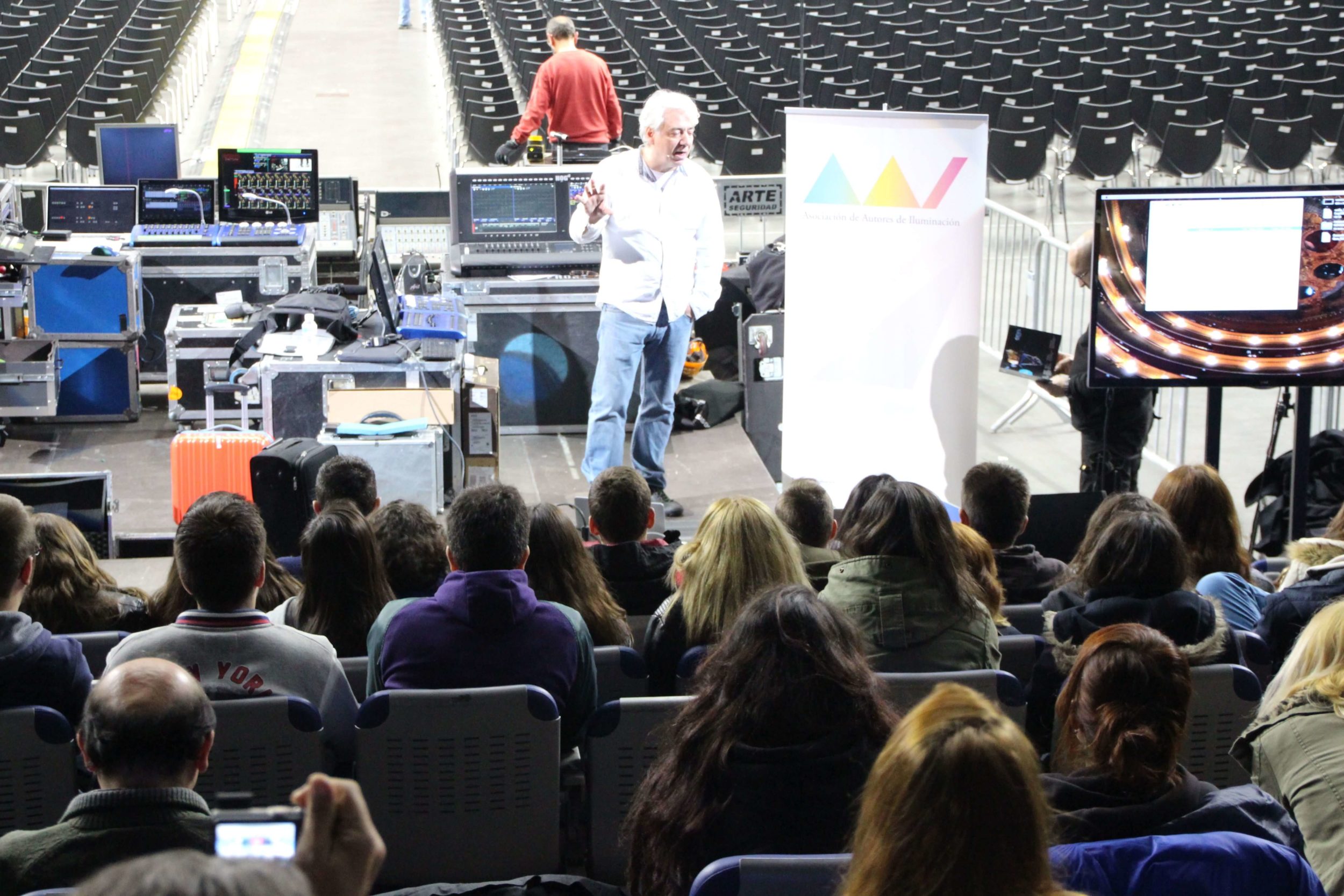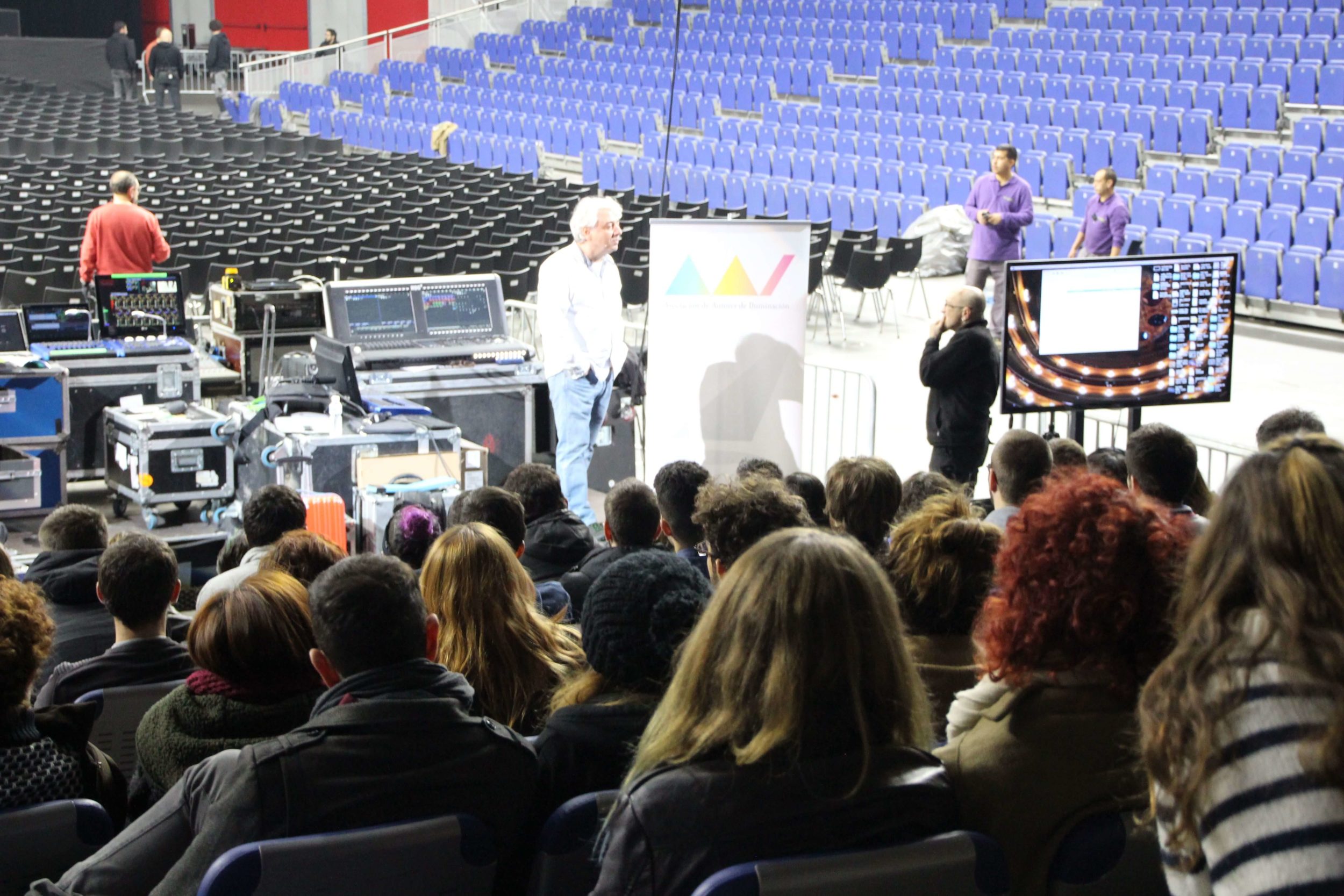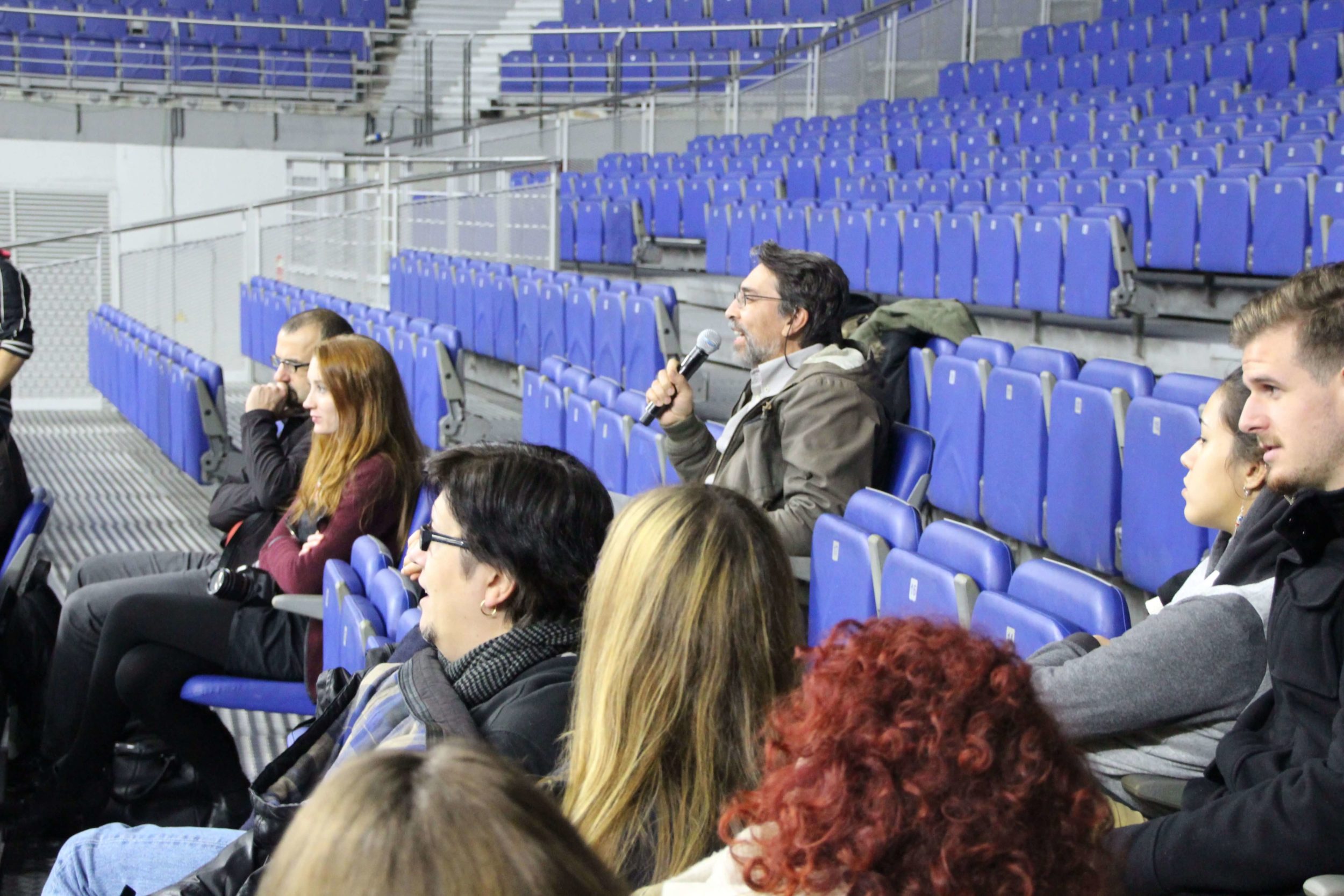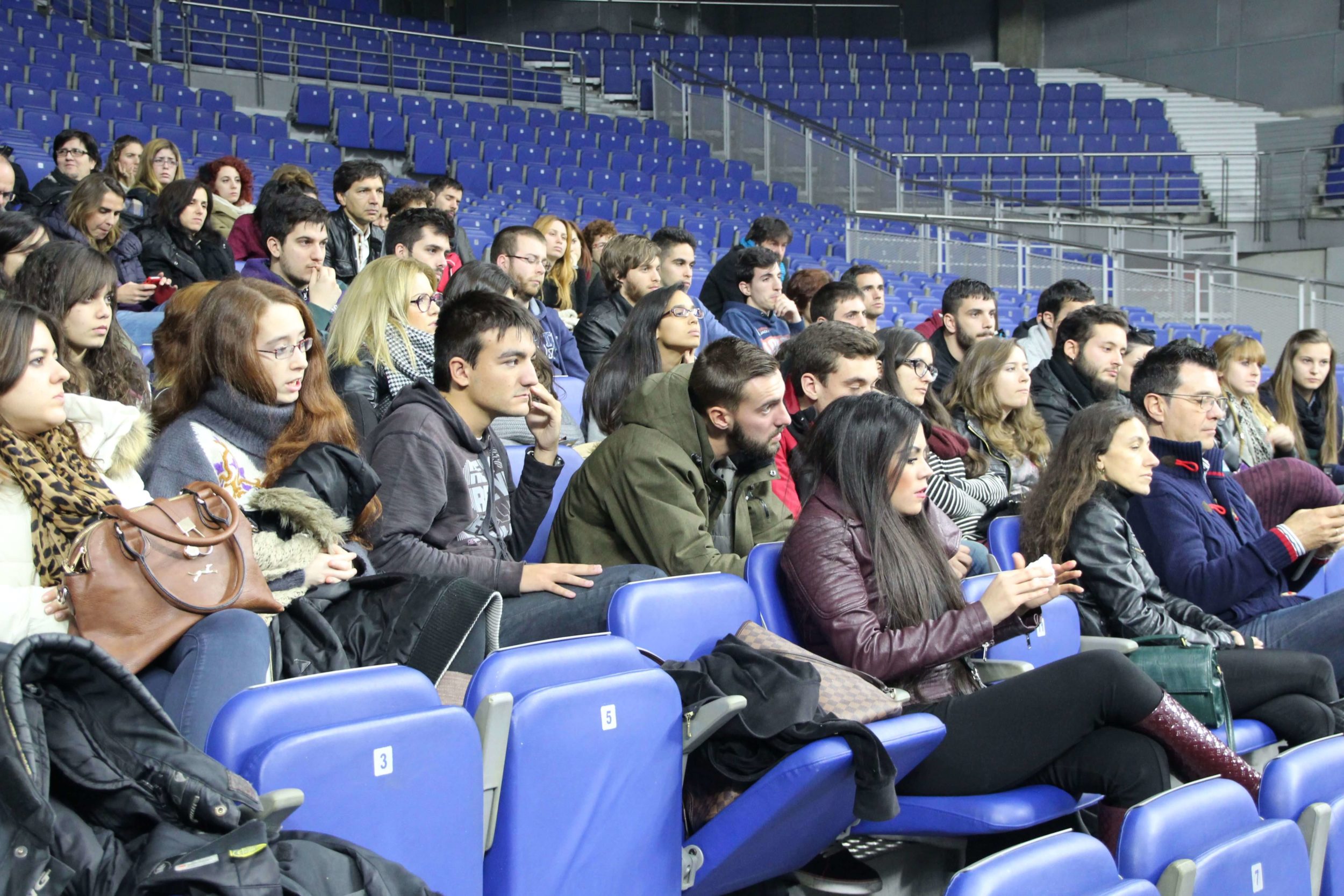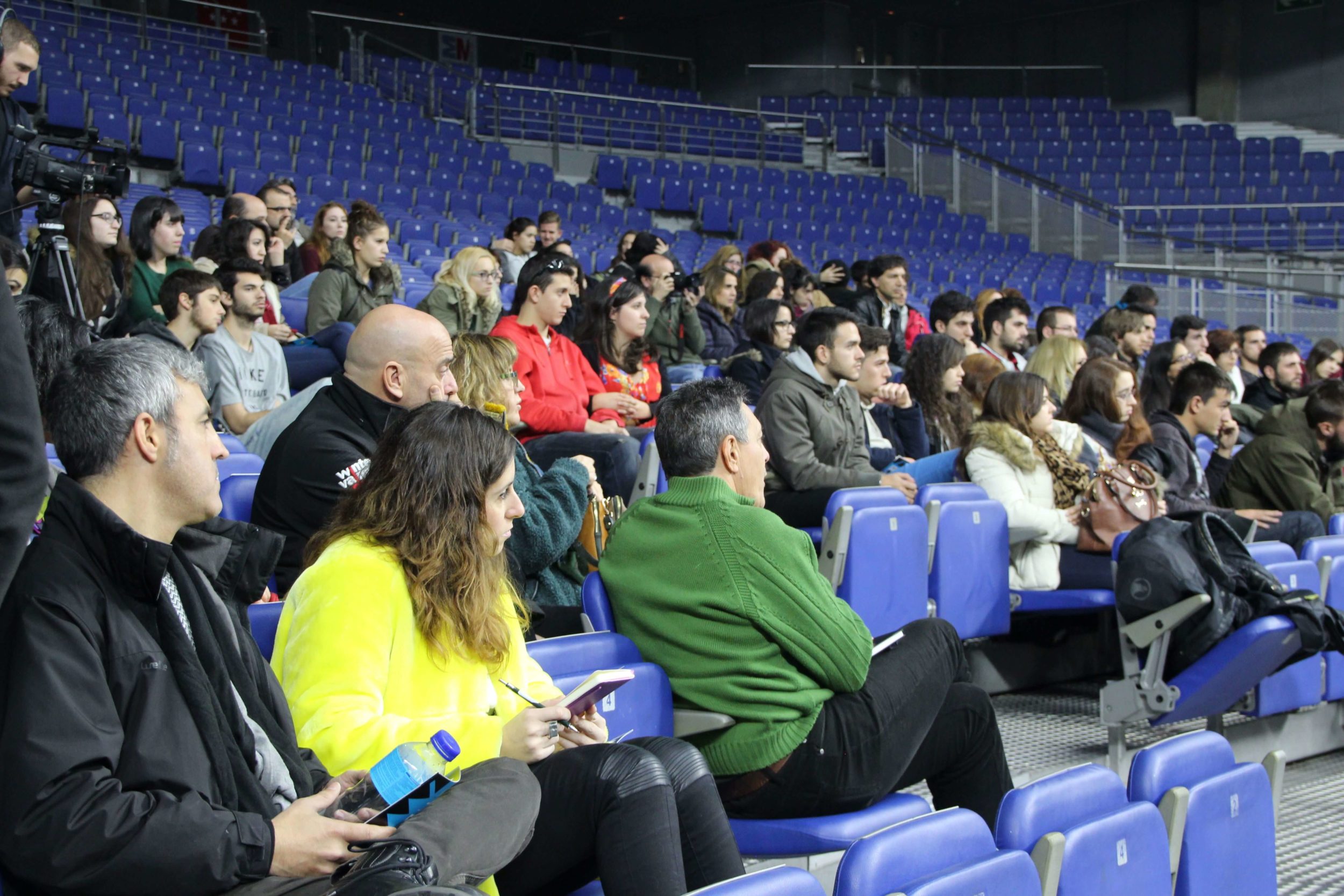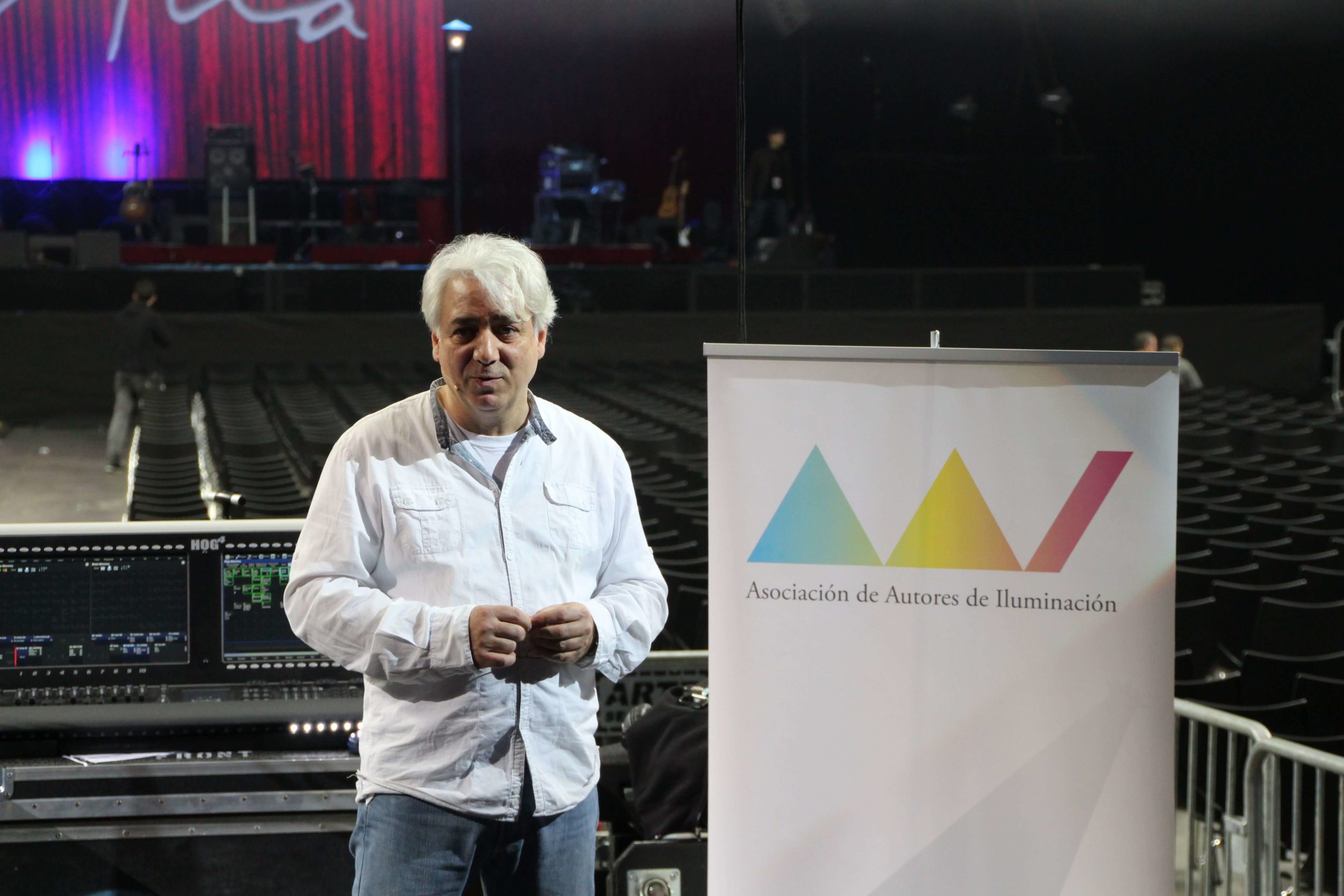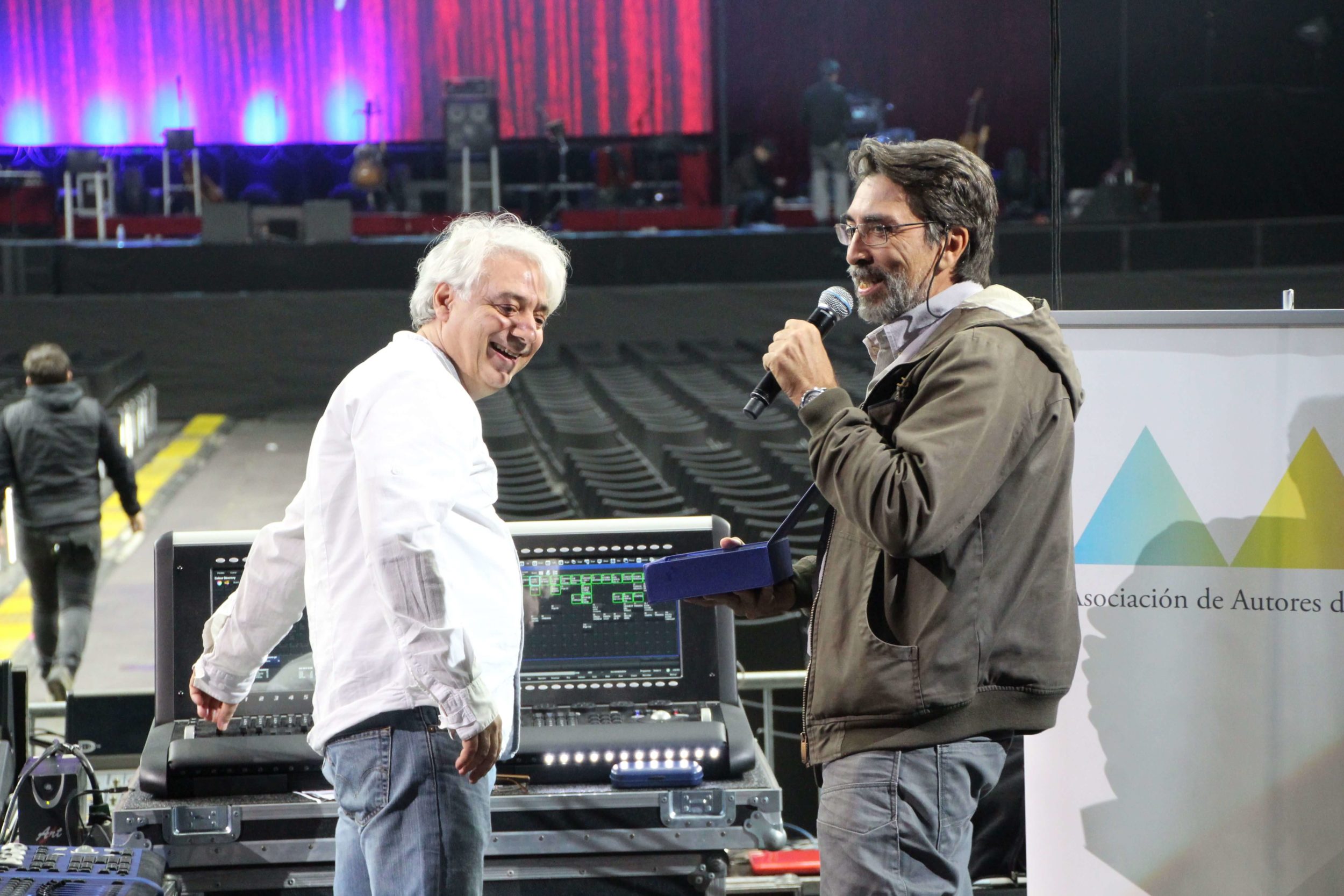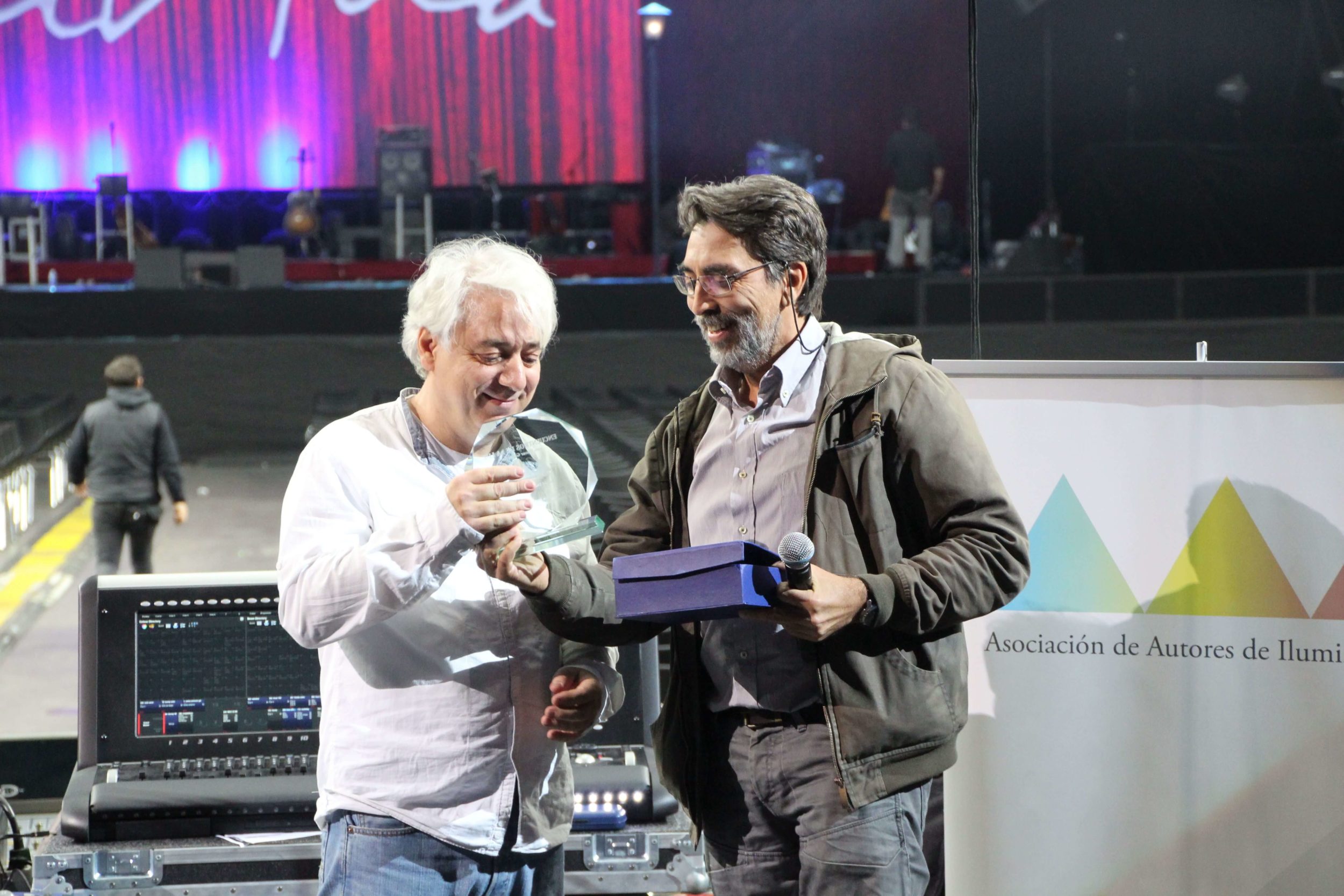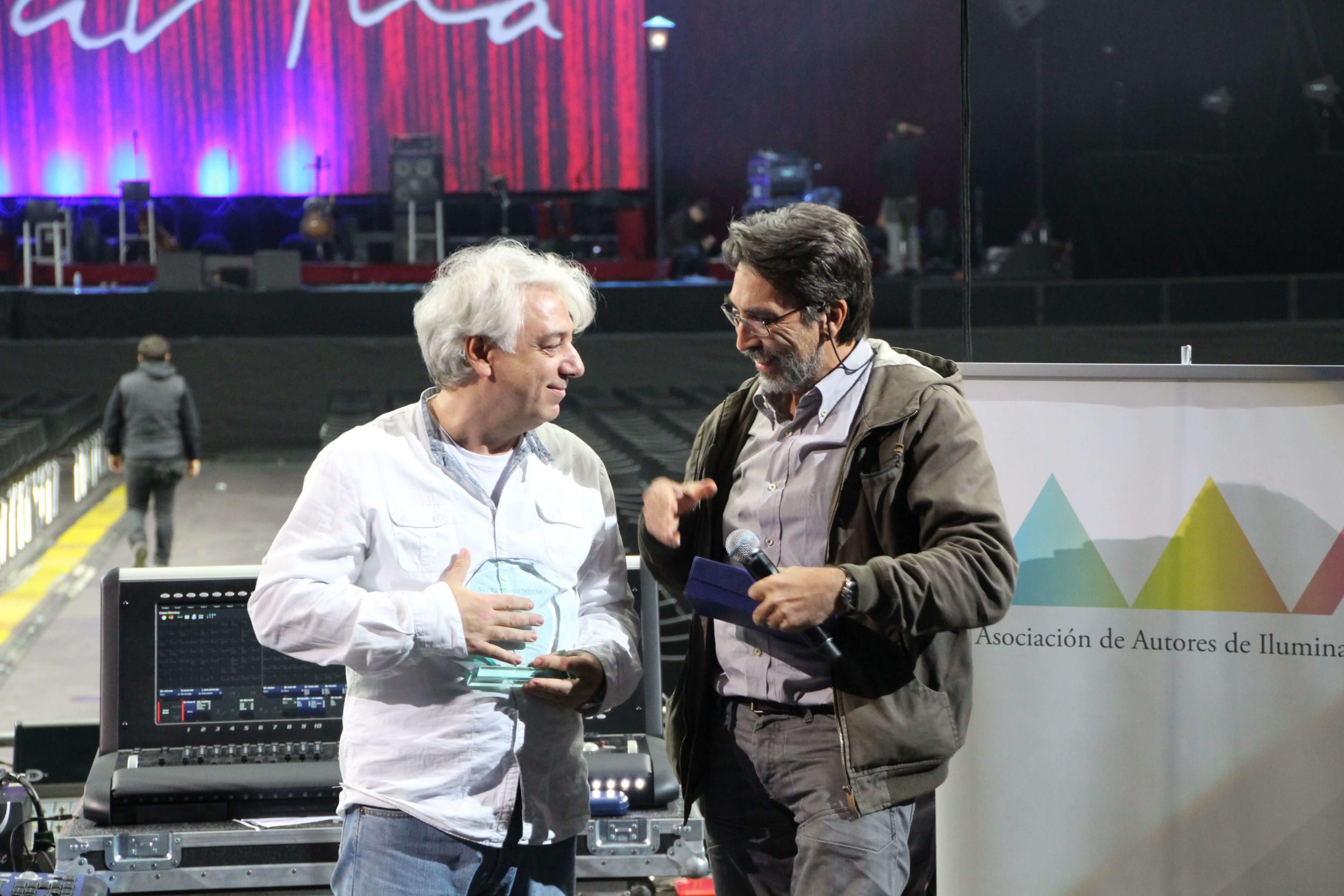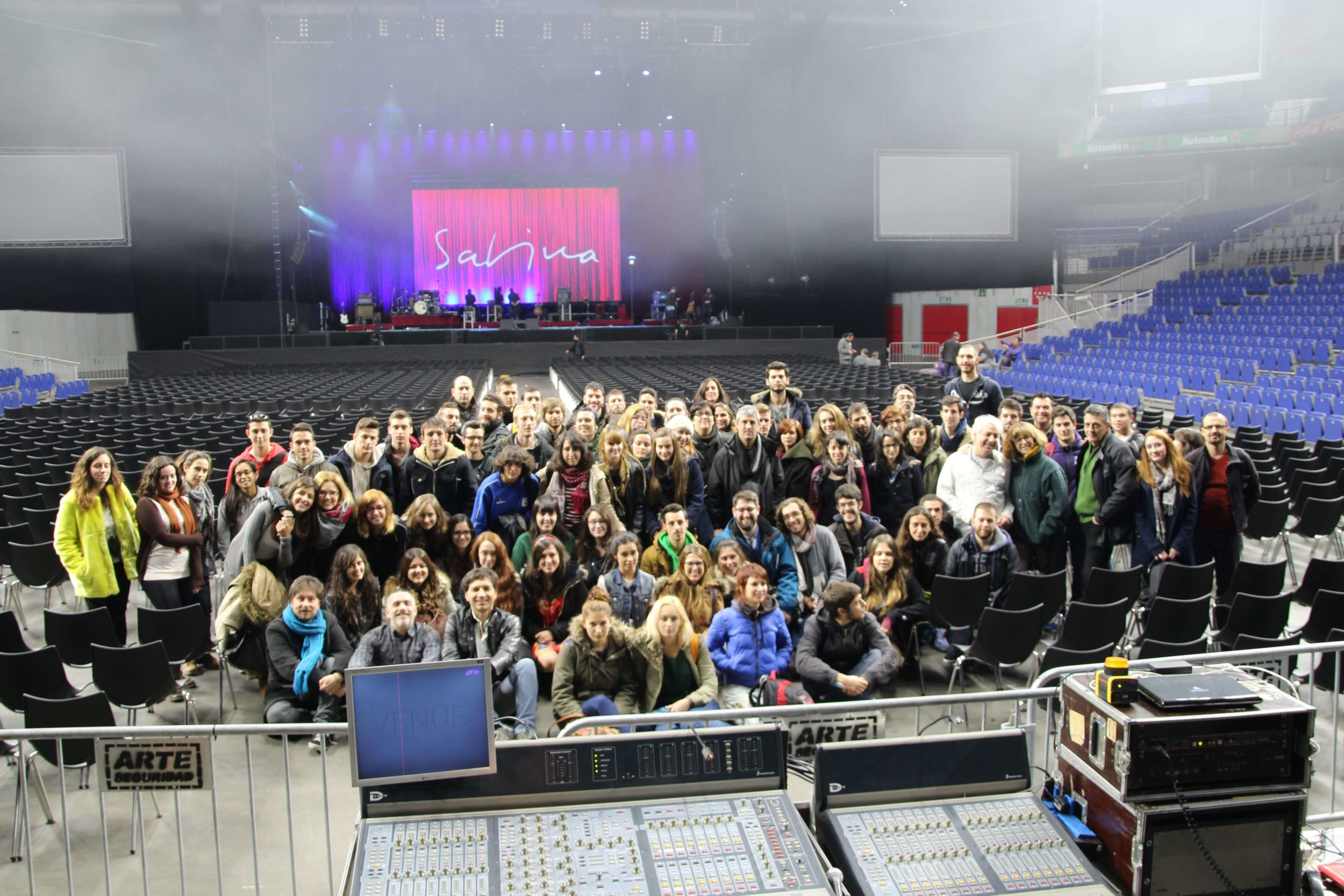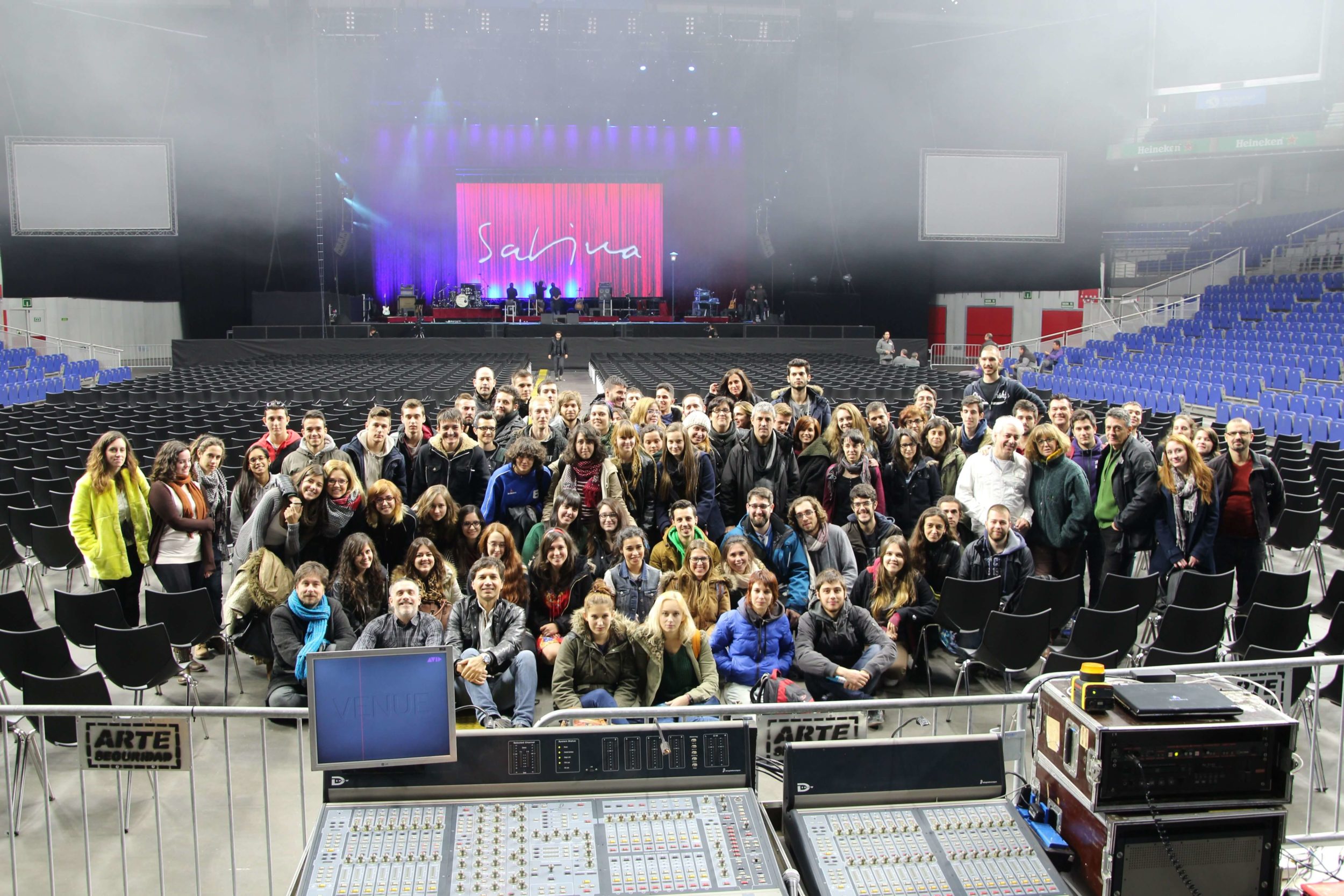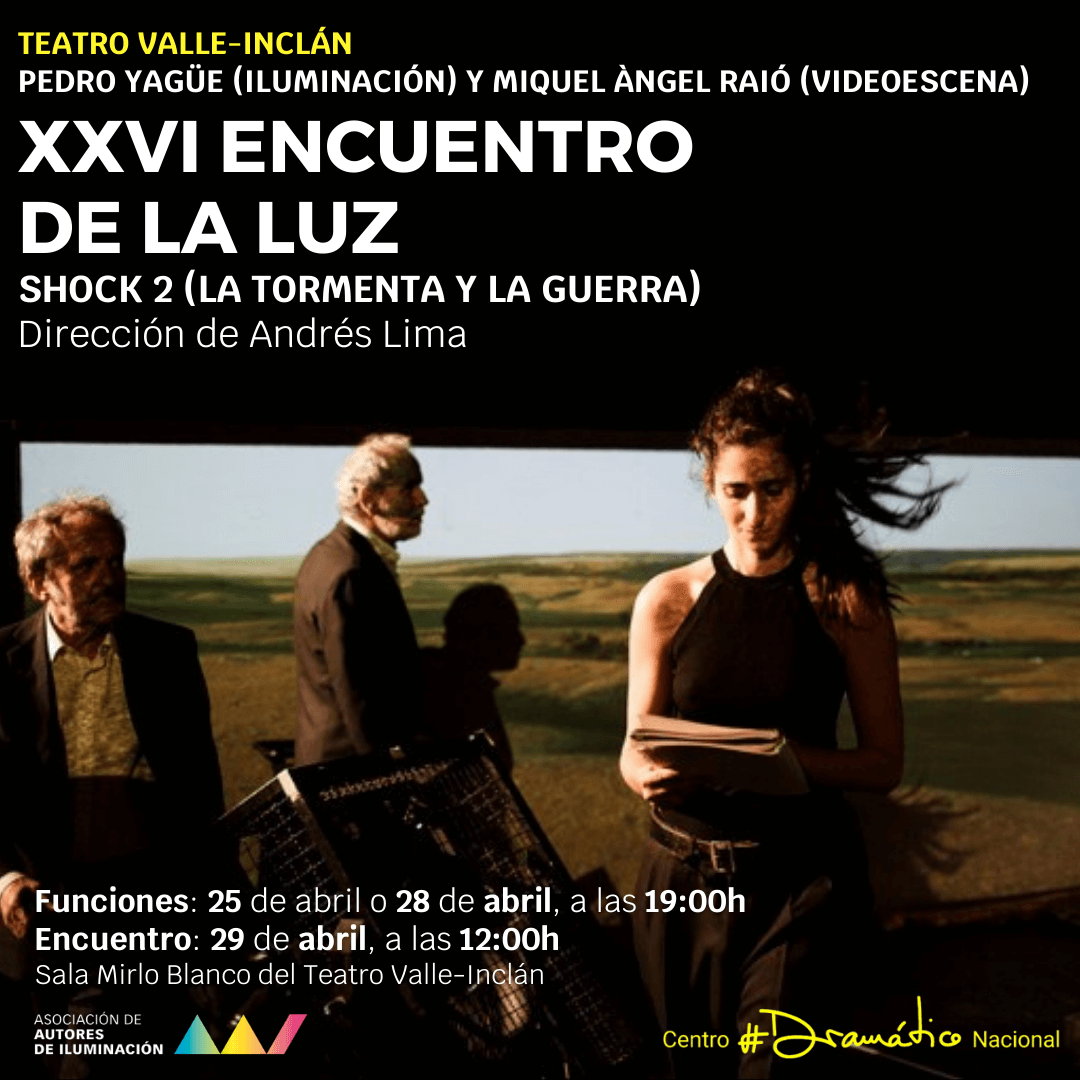On Tuesday December 16, 2014 the AAI, in line with the training activities carried out lately, convened us at the Barclaycard Center in Madrid for the realization of IX Meeting of Light.
This time it was live musical performances, the reason chosen for this new appointment. The usual capacity of convocation was amply reinforced by the presence of a hundred people among whom we could find, apart from AAI members, professionals of the sector, students of the RESAD, CIFP Jose Luis Garci, representatives of technical companies in the sector, etc..
Installed in the stands immediately behind the control stage, all these people enjoyed the privilege of attending a master class on lighting live music concerts in the indoor venue that usually hosts the biggest shows in the capital. Joaquín Sabina’s performance within his tour “500 nights for a crisis” was the ideal framework for the development of this activity and the explanations of his lighting designer and regular operator, Oscar Gallardo, associate and member of the AAI Board of Directors, facilitated the understanding of the different aspects of this speciality of stage lighting.
The presentation was in charge of the secretary of the AAI Nicolás Fischtel who made the introduction thanking first of all the sponsors of the Association and the collaborators who made possible the realization of the event, to later on gloss the figure and professional trajectory of Oscar and then give way for him to continue his own exposition.
Oscar Gallardo is a reference illuminator for live performances and as such, he showed us a short video with images of some of his tours of top artists with huge audiences.
He told us about the circumstances that determined his dedication to enlightenment. Her experience, like so many others at a time when there were no technical training studies, was due to something as casual as having to pick up her sister from her dance classes and that is how she was gradually introduced into the artistic world of the theatres.
Later, Paco Bragado, associate lighting designer and also a member of the AAI Board, specialized at that time in leading groups of the “movida” in Madrid, offered him the opportunity to work in that field, where he developed from then on his career based mainly on live musical performances in addition to developing in other professional spaces with notable success. After a few years working in companies in the sector, he became free-lance. From the end of the eighties, he began to work with different artists, mixing his previous professional experiences with the incorporation of new technologies that at that time began a revolution that would definitely change the stage lighting. In those times, the knowledge of programming and the use of new lighting control systems, opened a professional path, until then, unpublished; as he explained to us.
Names like Rosana, David Bisbal, Presuntos Implicados, Pasión Vega, Joan Manuel Serrat, Joaquin Sabina and many others mark a curriculum extended for almost three decades.
As for the set-up itself, it is based on a stage measuring 18 m in front by 12 m in the back, with a clear lateral view that offers a wide vision, ideal for large audiences. Devoid of corporeal scenographic elements, the performance area is only interrupted by the musicians’ platforms, giving it a clean appearance that facilitates the artist’s evolutions.
But undoubtedly the differentiating element is the purple-red backdrop, which, imitating a theatrical embouchure, provides an image that sheds the impression of gigantism and coldness that usually occurs in large venues and recovers a sense of intimacy and closeness so necessary in the style of music that Sabina represents.
This rear “mouthpiece” frames the decisive element, responsible for the general image of the show, which is none other than the video screen, which becomes the dynamic element that, together with the music and the lighting, represents the guiding thread of the show. This, naturally, implies a servitude on the part of the lighting, trying not to distort as much as possible the transmission of that visual universe so typical of this artist through the projected images, which consist mostly of animated pictures of Sabina himself mixed with images of the live concert. Vicente Fontecha is in charge of the video-scene work.
As for structures, the assembly is composed of three trusses of 18 meters each one in longitudinal disposition and 8 meters high. The front truss carries the spot lighting of musicians and artist that Oscar performs by placing a mobile and a cutout per position in addition to the light for the public (Martin Mac Aura Wash, cutout and Source Four Par). The middle truss located approximately towards the interior of the stage and closer to the curtain, Oscar dedicates it to the artist exclusively (Vari lite VL3000 and Martin Mac Aura Wash). The third one located at the end of the stage, slightly in front of the back where the screen is framed, is used for contras, effects and backlighting (Vari lite VL3000, Martin Mac Aura Wash and Wally Triton Blue). Two lateral trusses of 4mts long at 5 mts high, located in the last third of the stage and with three mobiles each one (Vari lite VL3000) complete the aerial structures of the set up.
The rest of the luminaires in the design are located on the floor; behind the musicians’ stage (Vari lite VL3000) for effects and at the foot of the false embouchure to illuminate the backdrop from below (Wally Triton Blue). Off stage, four HMI (Robert Juliat Aramis) cannons located to the left and right of the upper tier of the venue complete the design’s equipment. Oscar also spoke to us about the importance of the “haze” smoke that helps him to achieve the visual level of density that he considers desirable.
Regarding the choice of luminaires in the design process, Oscar told us that he was unwilling to use conventional lighting, using only the essential and his predilection for mobiles because of the ease with which he could reproduce his show anywhere. He also told us that when designing, he takes into account that sometimes, the material available is not exactly the same everywhere, which implies the need to make his proposals more flexible.
As for the choice of colour, Oscar transmitted us his predilection for soft tones, little saturated that he thinks suitable for an artist whose show, although it has musical bases of rock, is not based essentially on the rhythmic spectacularity, but in the search of the complicity with his public. However, the livelier parts of the show, where the artist-audience intimacy is less important, are not penalized by this.
He also indicated his preference for dressing the stage in unique colours, avoiding as much as possible the mixture of different planes, as well as his choice of white in the lighting of the faces of the musicians and the artist.
The movements of the mobiles are usually harmoniously coordinated with the images on the screen and the music and even when he moves them to invite people to sing he does it in a smooth and coordinated way. All this gives rise to an elegant and careful lighting, which, without standing out unnecessarily, always meets the needs of the show.
As for the general concept of the lighting for this show, Oscar made a clear statement of intent when he told us: “People come to see Sabina, not my lights”. This idea was present in each of the explanations that Oscar gave us, both in his presentation and in the question and answer session that followed. This philosophy, together with his background in the world of theatre, provides him with the ideal tools to tackle this type of work and to do it brilliantly.
The pleasure of knowing “in situ” the interior of a show of these characteristics made us lose track of time and forget that we were in the middle of a complex assembly and that our presence there had to come to an end. It may have been short, but that’s what always happens when you have a good time and Oscar’s generosity in sharing his knowledge made us enjoy it a lot. At the end of the event, Tano Astiaso, Vice President of the AAI, gave him a commemorative plaque as a token of a more than deserved recognition.
The photo of Oscar with the assistants in the middle of the pavilion, put the colophon to an activity that was developed in an agile and relaxed way.
We must also thank the organization of the concert for the facilities given to carry out this activity and for providing technical material so that the unusual number of listeners did not miss anything of Oscar’s explanations.
In short, a IX meeting of the Light that did not disappoint anyone and that follows in the wake of the previous ones, in which the work of dissemination of our profession is developed with the best professionals and in the best of environments.
Tito Sainz de la Maza
(AAI Partner)


